Using DEFORM Software for Determination of Parameters for Two Fracture Criteria on DIN 34CrNiMo6
Abstract
1. Introduction
2. Material
3. Uncoupled Fracture Models
4. Experiments
4.1. Basic Tests
4.2. Tests for Fracture Coefficient Determination
4.3. Validation Tests
5. Numerical Simulation Using DEFORM Software
5.1. Construction of Plasticity Models
5.2. Identification of Fracture Parameters
6. Validation of Criteria Coefficients and Discussion
6.1. Radial Compression of Ring Specimens
6.2. Axial Compression of a Notched Cylinder
7. Conclusions
Author Contributions
Funding
Acknowledgments
Conflicts of Interest
References
- Zheng, C.; de Sa Cesar, J.M.A.; Andrade Pires, F.M. A comparison of models for ductile fracture prediction in forging processes. Comput. Methods Mater. Sci. 2007, 7, 389–396. [Google Scholar]
- Silva, C.M.A.; Alves, L.M.; Nielsen, C.V.; Atkins, A.G.; Martins, P.A.F. Failure by fracture in bulk metal forming. J. Mater. Process. Technol. 2015, 215, 287–298. [Google Scholar] [CrossRef]
- Yu, S.; Feng, W. Experimental research on ductile fracture criterion in metal forming. Front. Mech. Eng. 2011, 6, 308–311. [Google Scholar] [CrossRef]
- DrieMeier, L.; Moura, R.T.; Machado, I.F.; Alves, M. A bifailure specimen for accessing failure criteria performance. Int. J. Plast. 2015, 71, 62–86. [Google Scholar]
- Bridgman, P.W. Studies in Large Flow and Fracture; McGraw Hill: New York, NY, USA, 1952. [Google Scholar]
- McClintock, F.A. A criterion for ductile fracture by the growth of holes. J. Appl. Mech. Trans. 1968, 35, 363–371. [Google Scholar] [CrossRef]
- Rice, D.; Tracey, D. On the ductile enlargement of voids in triaxial stress fields. J. Mech. Phys. Solids 1969, 17, 201–217. [Google Scholar] [CrossRef]
- Johnson, G.R.; Cook, W.H. Fracture characteristic of three metals subjected to various strains, strain rates, temperatures and pressures. Eng. Fract. Mech. 1985, 21, 31–48. [Google Scholar] [CrossRef]
- Wierzbicki, T.; Bao, Y.; Lee, Y.W.; Bai, Y. Calibration and evaluation of seven fracture models. Int. J. Mech. Sci. 2005, 47, 719–743. [Google Scholar] [CrossRef]
- Kim, J.; Zhang, G.; Gao, X. Modeling of ductile fracture: Application of the mechanism-based concepts. Int. J. Solids Struct. 2007, 44, 1844–1862. [Google Scholar] [CrossRef]
- Gao, X.; Kim, J. Modeling of ductile fracture: Significance of void coalescence. Int. J. Solids Struct. 2006, 43, 6277–6293. [Google Scholar] [CrossRef]
- Brünig, M.; Chyra, O.; Albrecht, D.; Driemeier, L.; Alves, M. A ductile damage criterion at various stress triaxialities. Int. J. Plast. 2008, 24, 1731–1755. [Google Scholar] [CrossRef]
- Kubík, P.; Šebek, F.; Petruška, J.; Hůlka, J.; Růžička, J.; Španiel, M.; Džugan, J.; Prantl, A. Calibration of Selected Ductile Fracture Criteria Using Two Types of Specimens. Key Eng. Mater. 2014, 592–593, 258–261. [Google Scholar] [CrossRef]
- Španiel, M.; Prantl, A.; Džugan, J.; Růžička, J.; Moravec, M.; Kuželka, J. Calibration of fracture locus in scope of uncoupled elastic–plastic-ductile fracture material models. Adv. Eng. Softw. 2014, 72, 95–108. [Google Scholar] [CrossRef]
- Prantl, A.; Džugan, J.; Konopík, P. Ductile Damage Parameters Identification for Nuclear Power Plants Experimental Part. COMAT 2012. [Google Scholar]
- Branco, R.; Costa, J.D.M.; Antunes, F.V.; Perdigão, S. Monotonic and cyclic behaviour of DIN 34CrNiMo6 tempered alloy steel. Metals 2016, 6, 98. [Google Scholar] [CrossRef]
- Bai, Y.; Wierzbicki, T. A comparative study of three groups of ductile fracture loci the 3D space. Eng. Fract. Mech. 2015, 135, 147–167. [Google Scholar] [CrossRef]
- Lou, Y.; Huh, H. Evaluation of ductile fracture criteria in a general three-dimensional stress state considering the stress triaxiality and the lode parameter. Acta Mech. Solida Sin. 2013, 26. [Google Scholar] [CrossRef]
- Stebunov, S.; Vlasov, A.; Biba, N. Prediction of fracture in cold forging with modified Cockcroft-Latham criterion. Procedia Manuf. 2018, 15, 519–526. [Google Scholar] [CrossRef]
- Available online: https://www.gom.com/3d-software/gom-correlate.html (accessed on 14 August 2019).
- Poláková, I.; Kubina, T. Flow stress determination methods for numerical modelling. In Proceedings of the 22nd International Conference on Metallurgy and Materials, Brno, Czech Republic, 15–17 May 2013; pp. 273–278, ISBN 978-80-87294-41-3. [Google Scholar]
- Džugan, J.; Španiel, M.; Prantl, A.; Konopík, P.; Růžička, J.; Kuželka, J. Identification of ductile damage parameters for pressure vessel steel. Nucl. Eng. Des. 2018, 328, 372–380. [Google Scholar] [CrossRef]
- Ling, Y. Uniaxial true stress-strain after necking. AMP J. Technol. 1996, 5, 37–48. [Google Scholar]
- Oyane, M.; Sato, T.; Okimoto, K.; Shima, S. Criteria for ductile fracture and their applications. J. Mech. Work. Technol. 1980, 4, 65–81. [Google Scholar] [CrossRef]
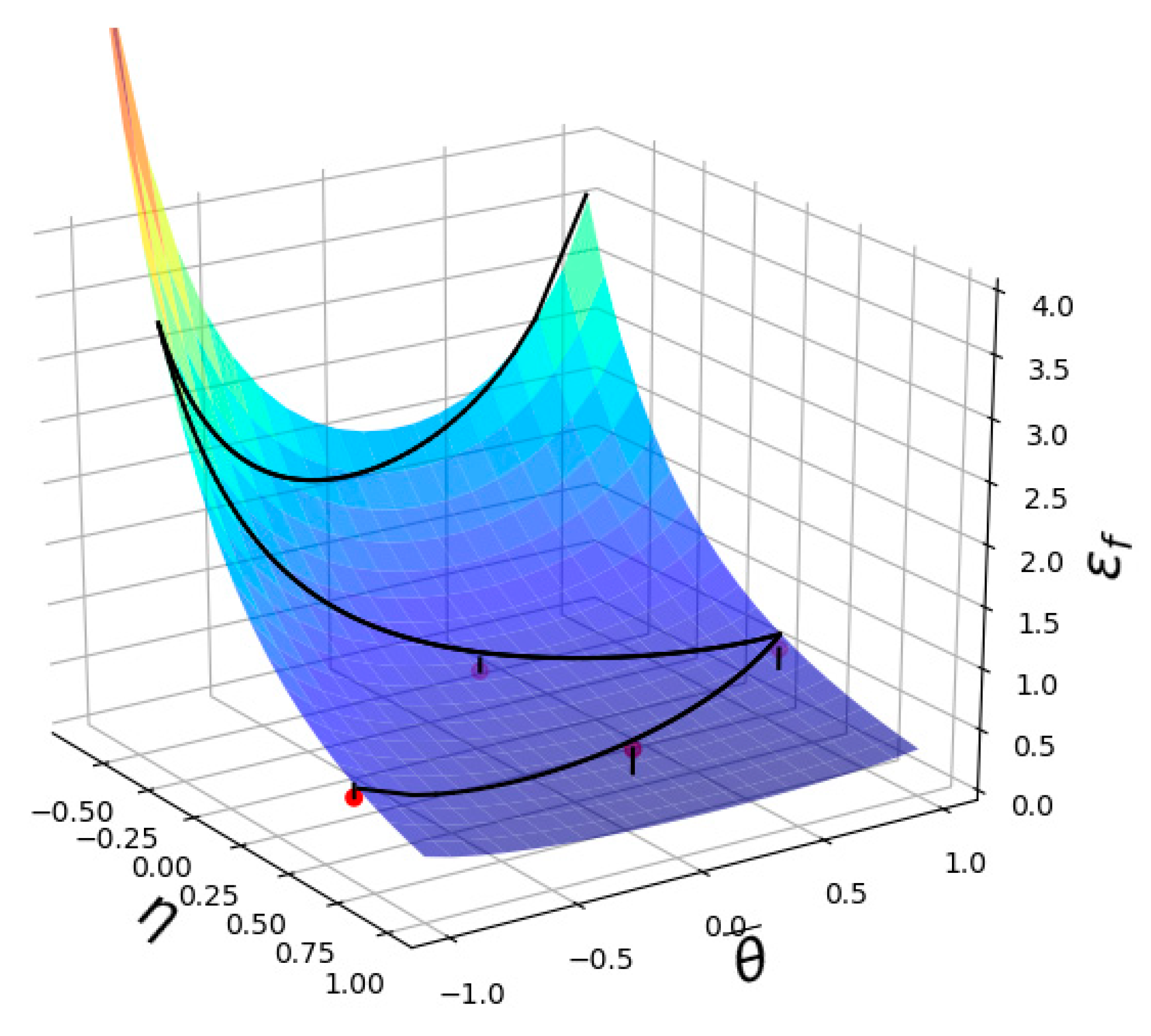
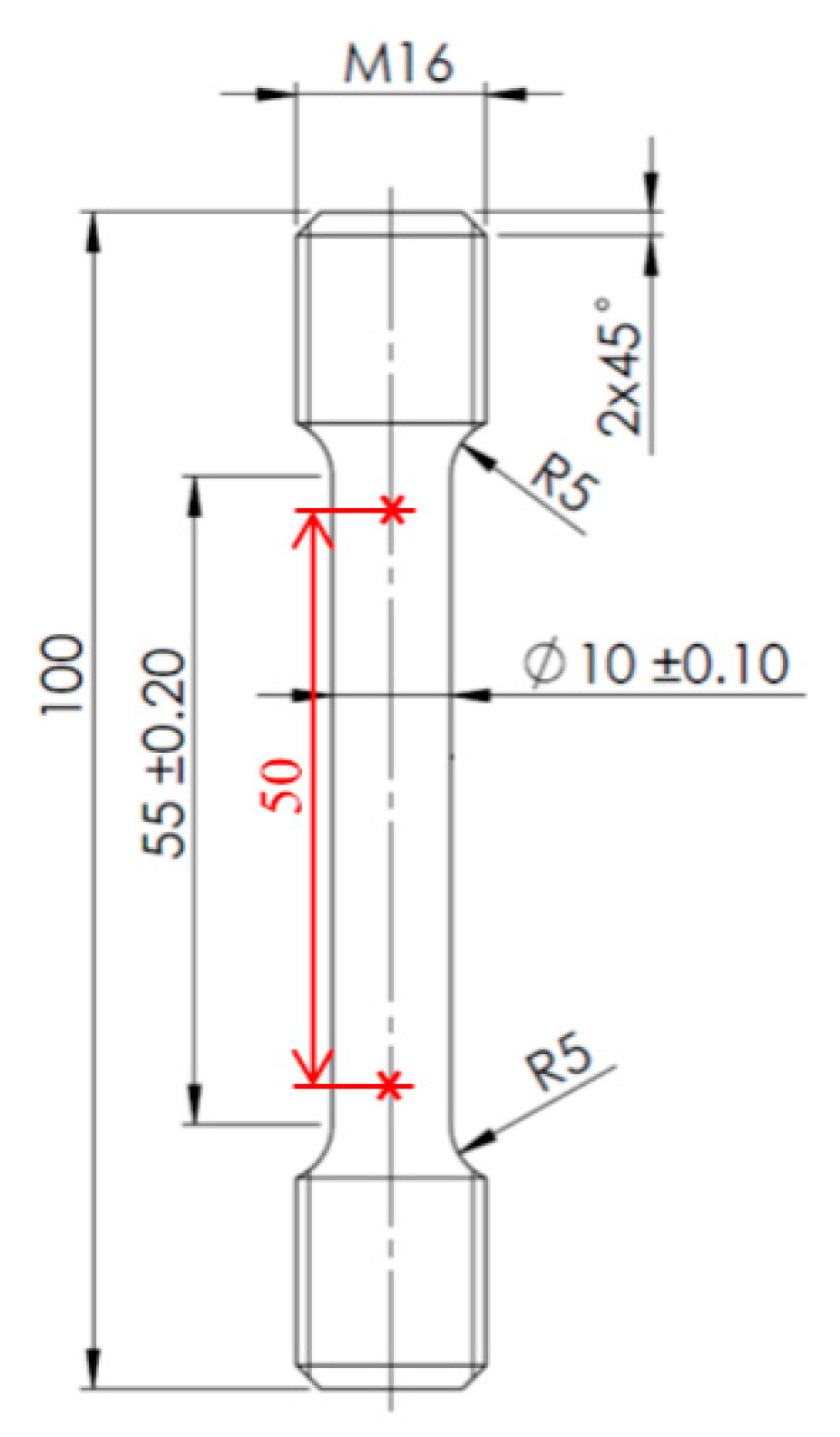

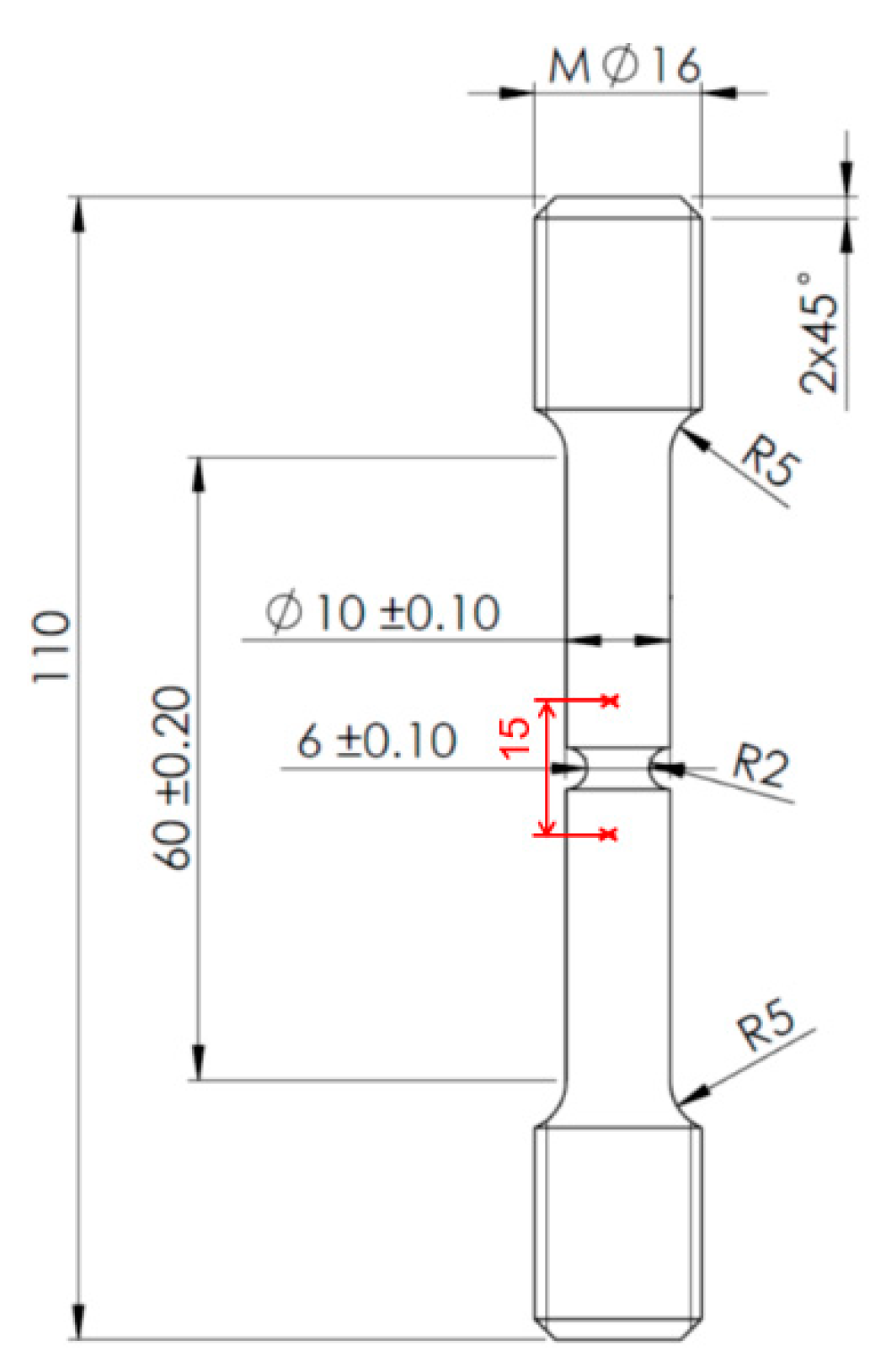
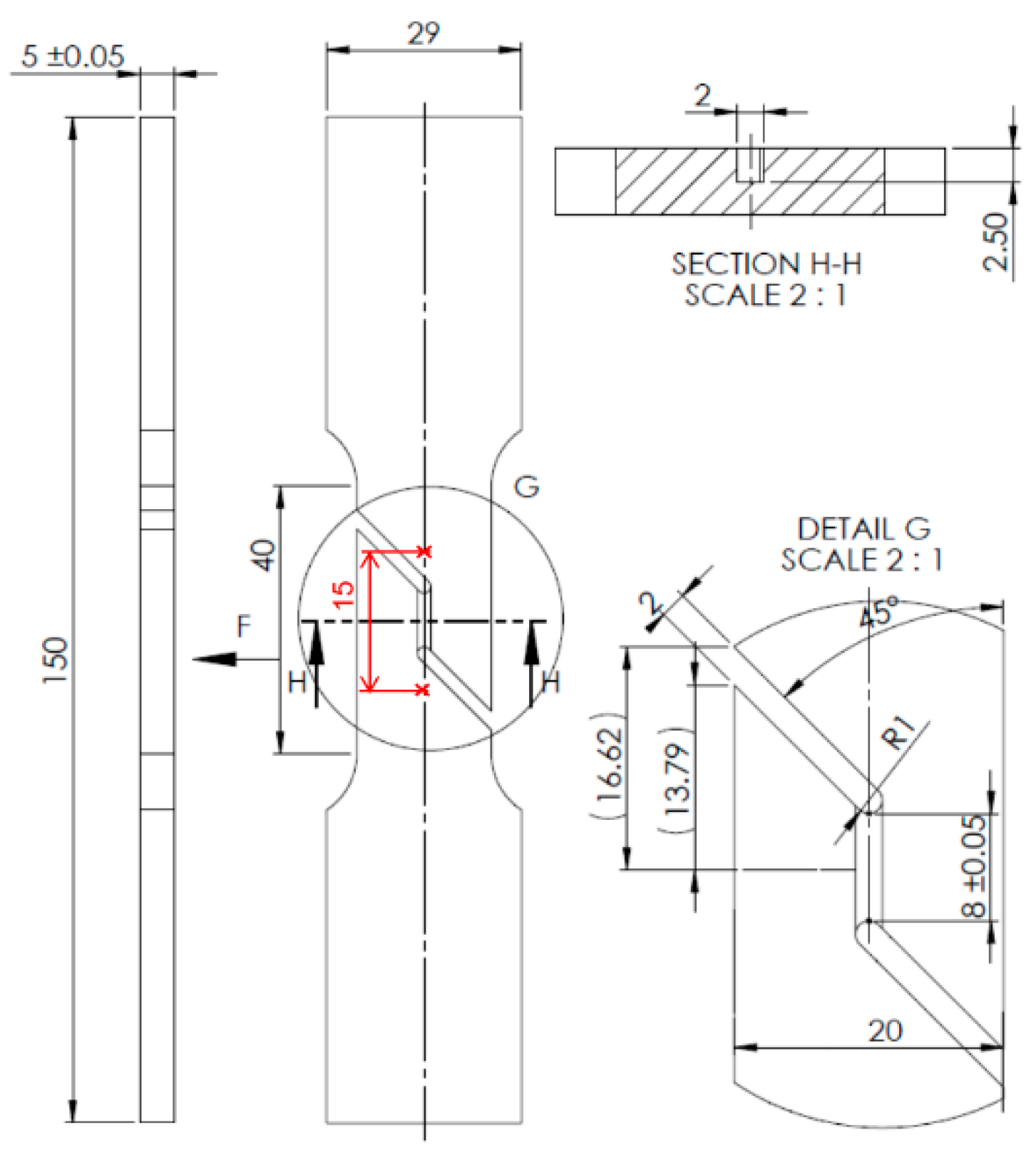
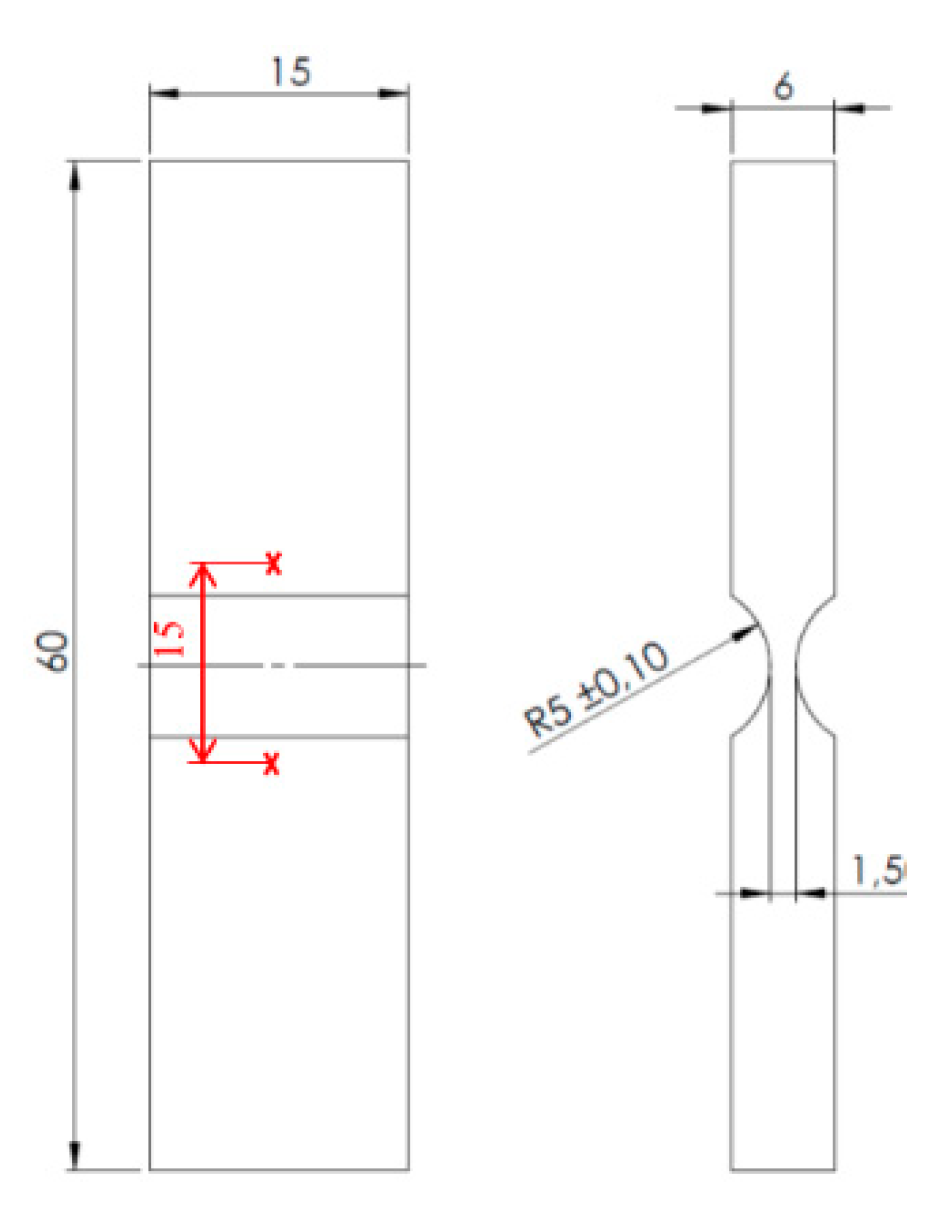
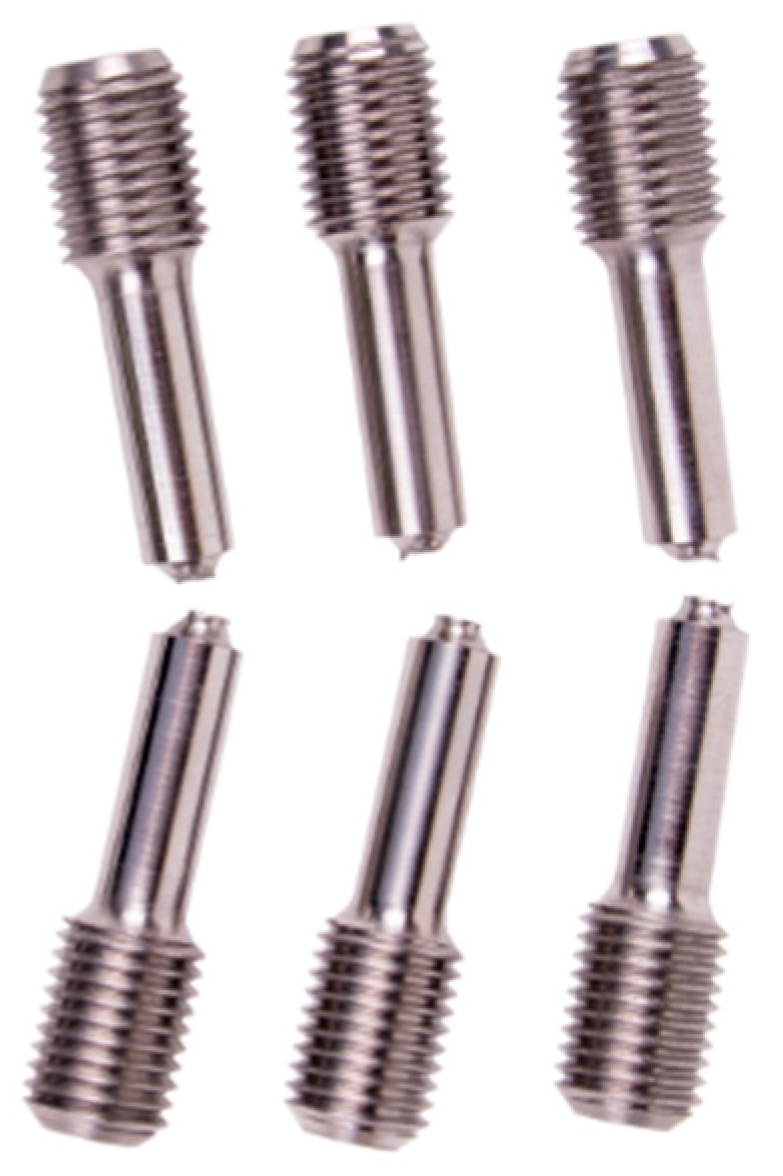
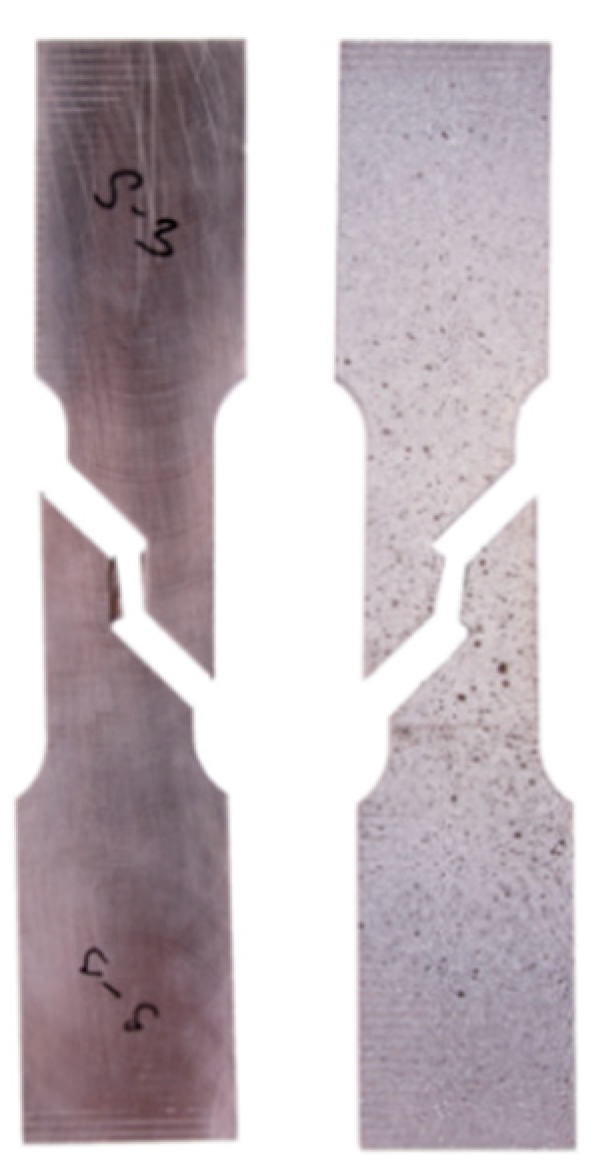



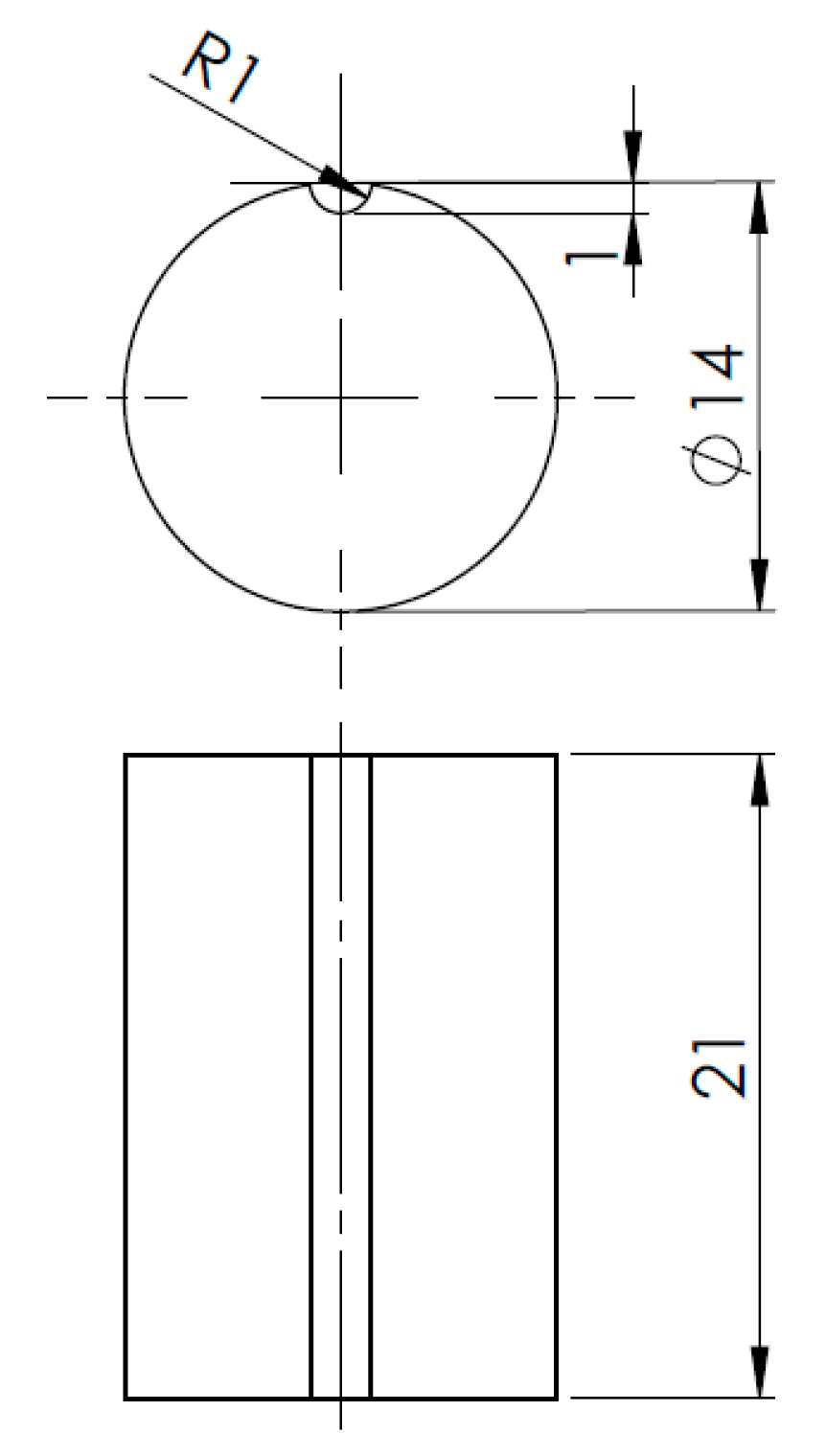
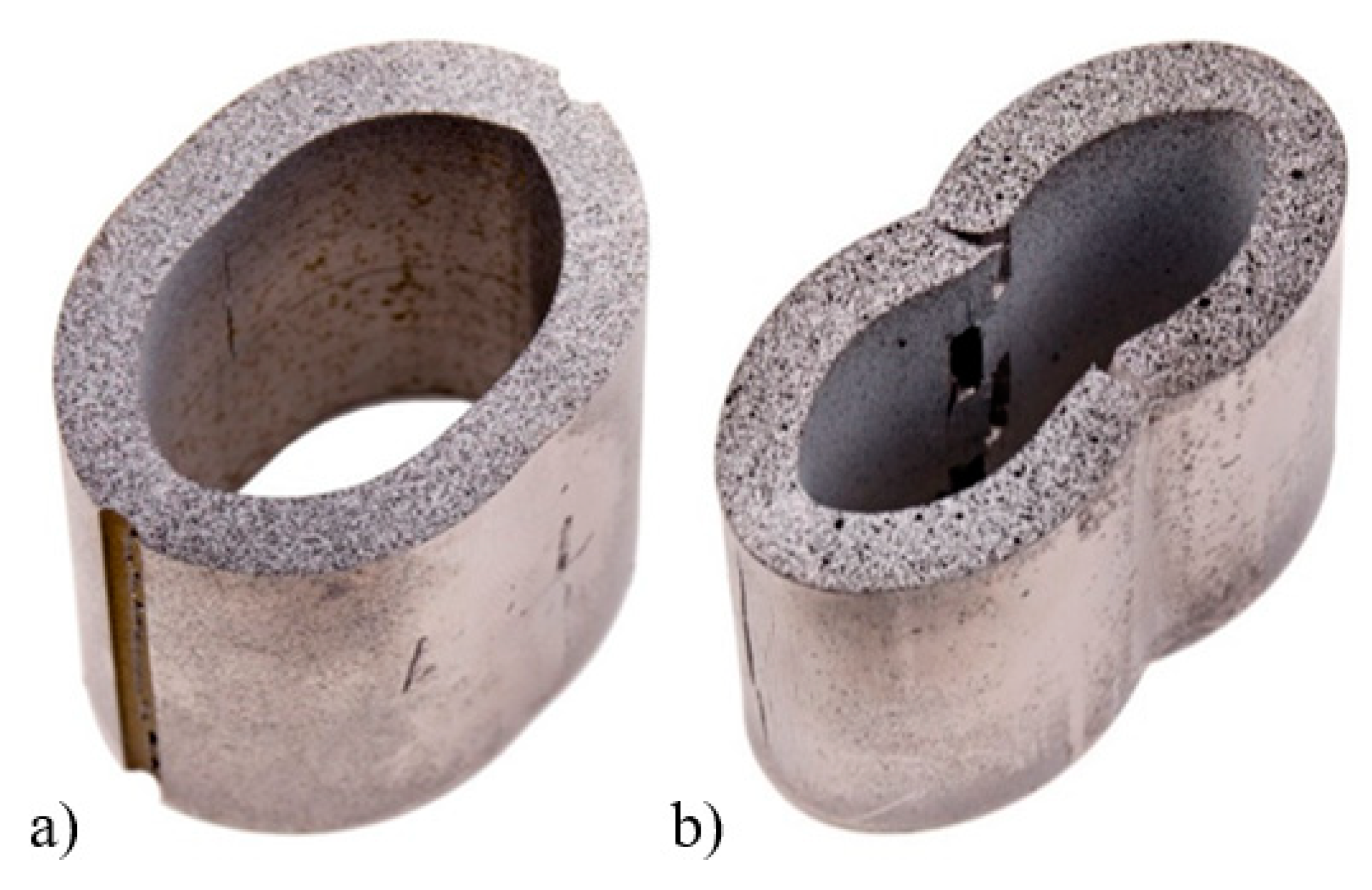

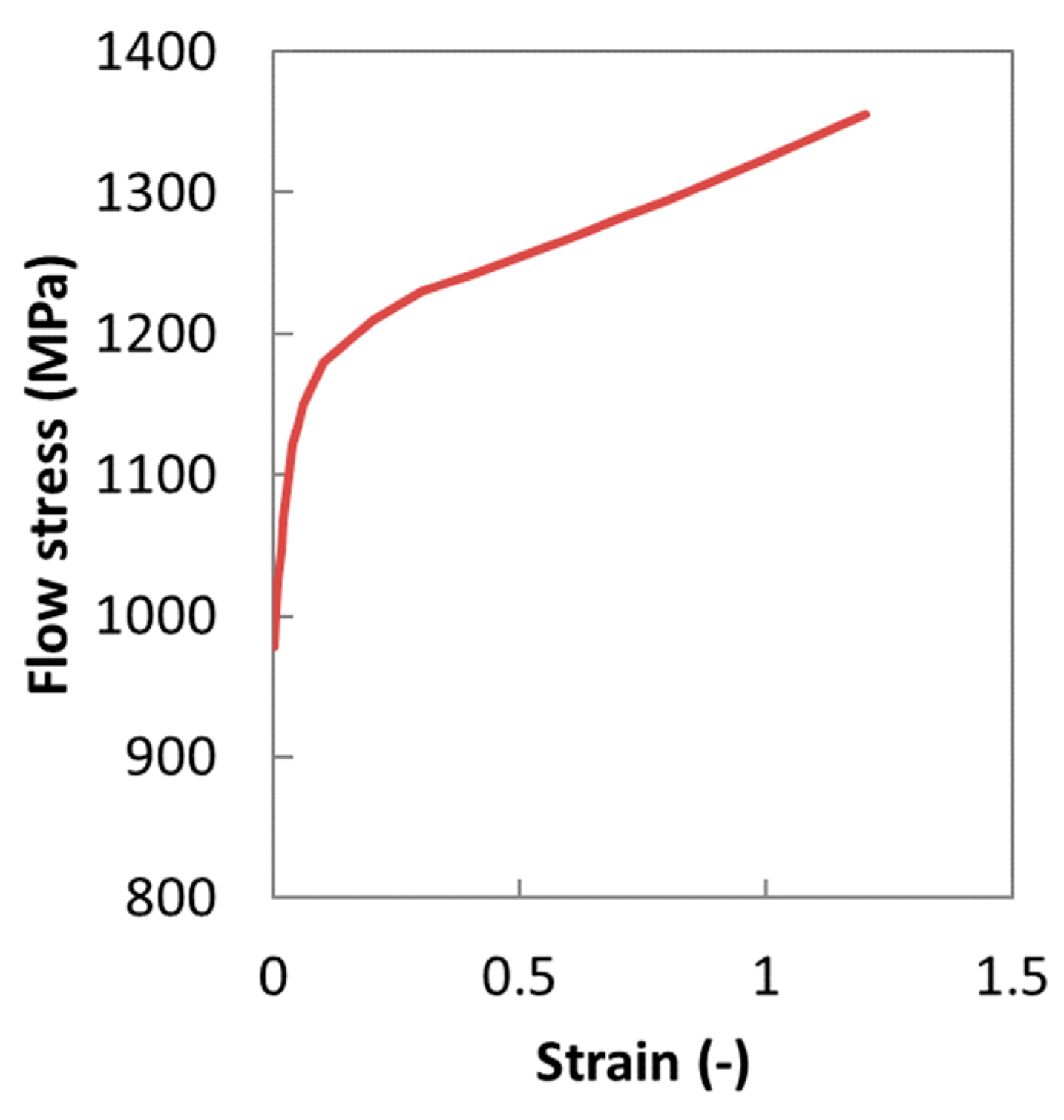
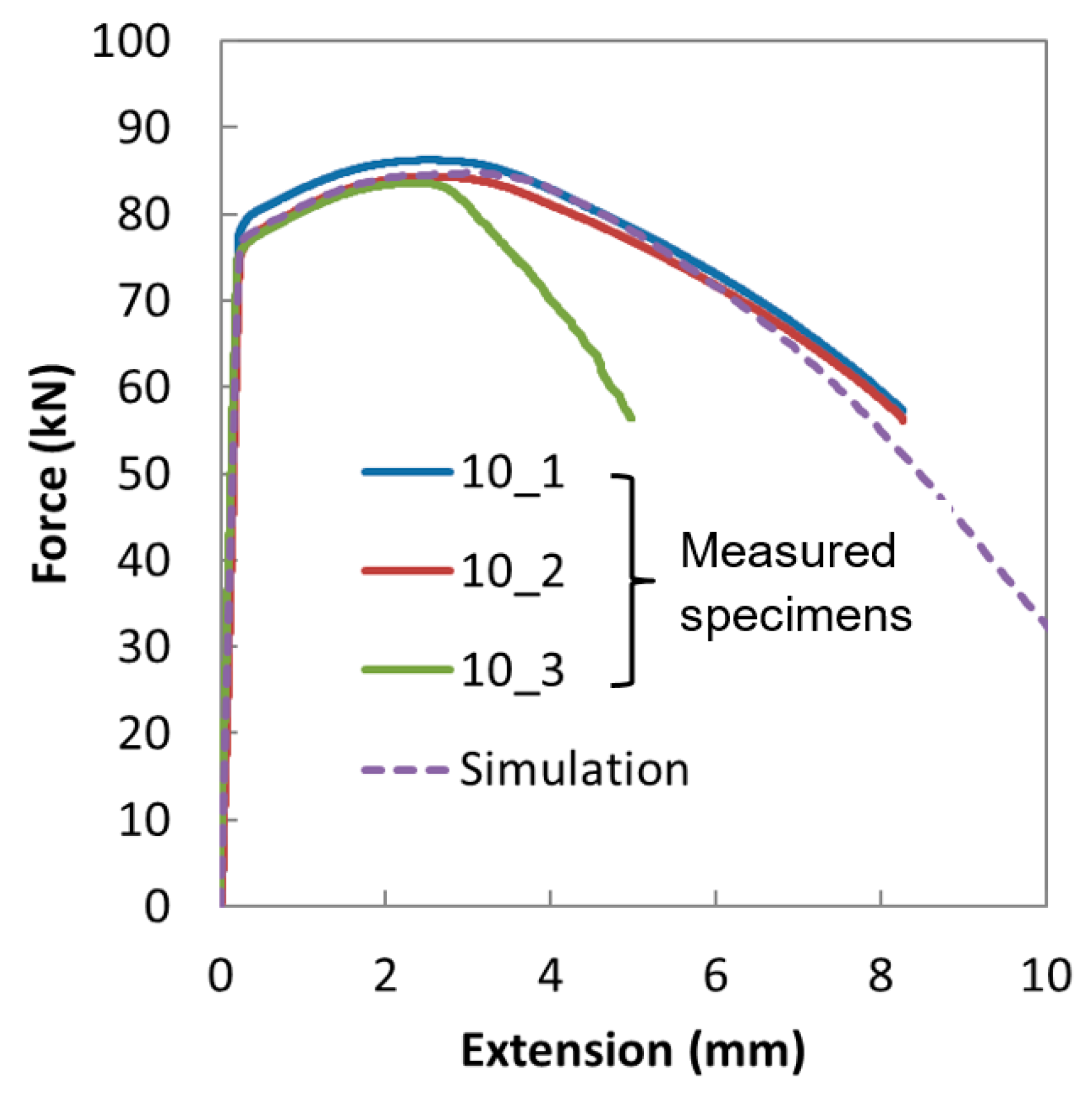
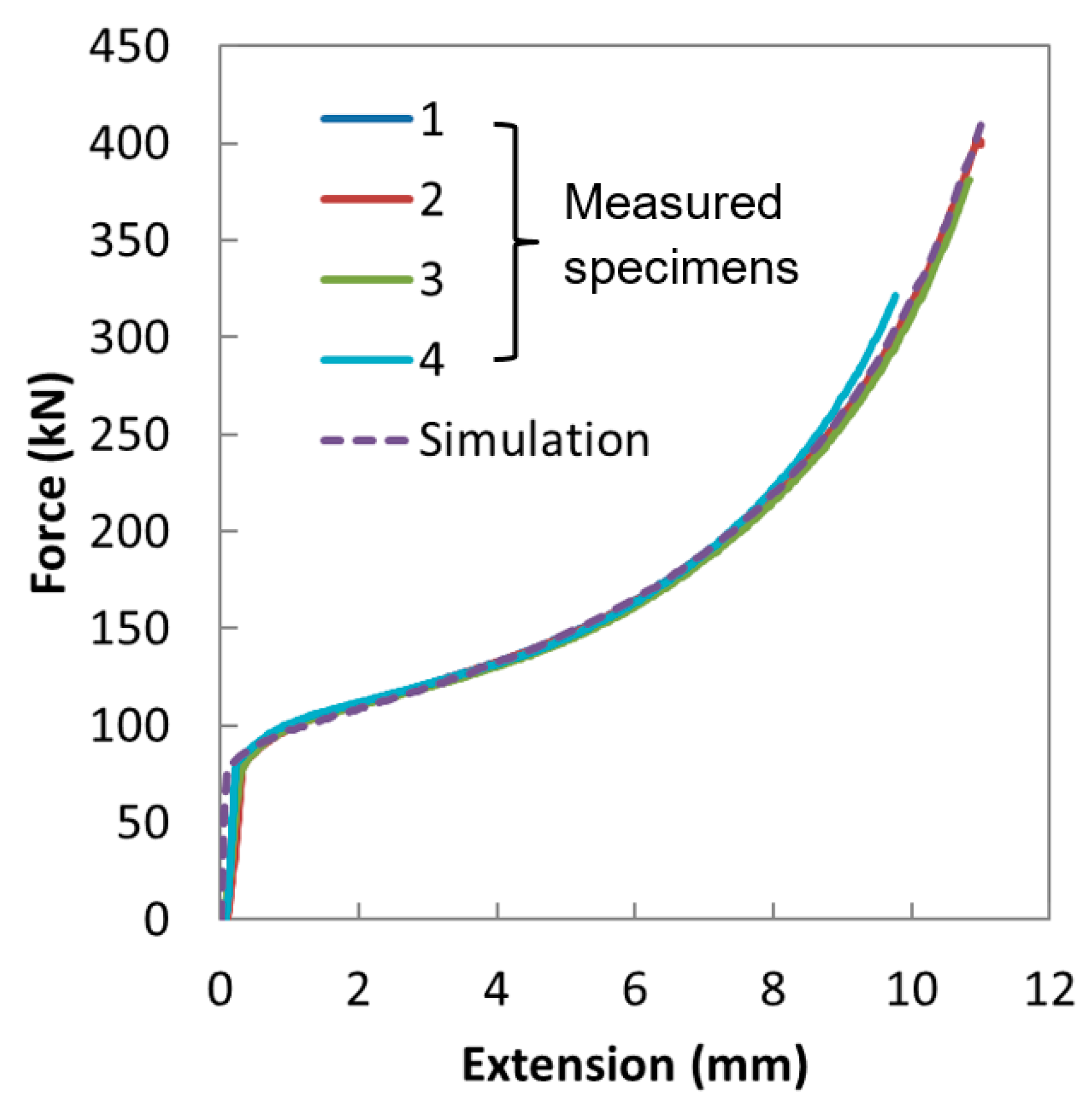
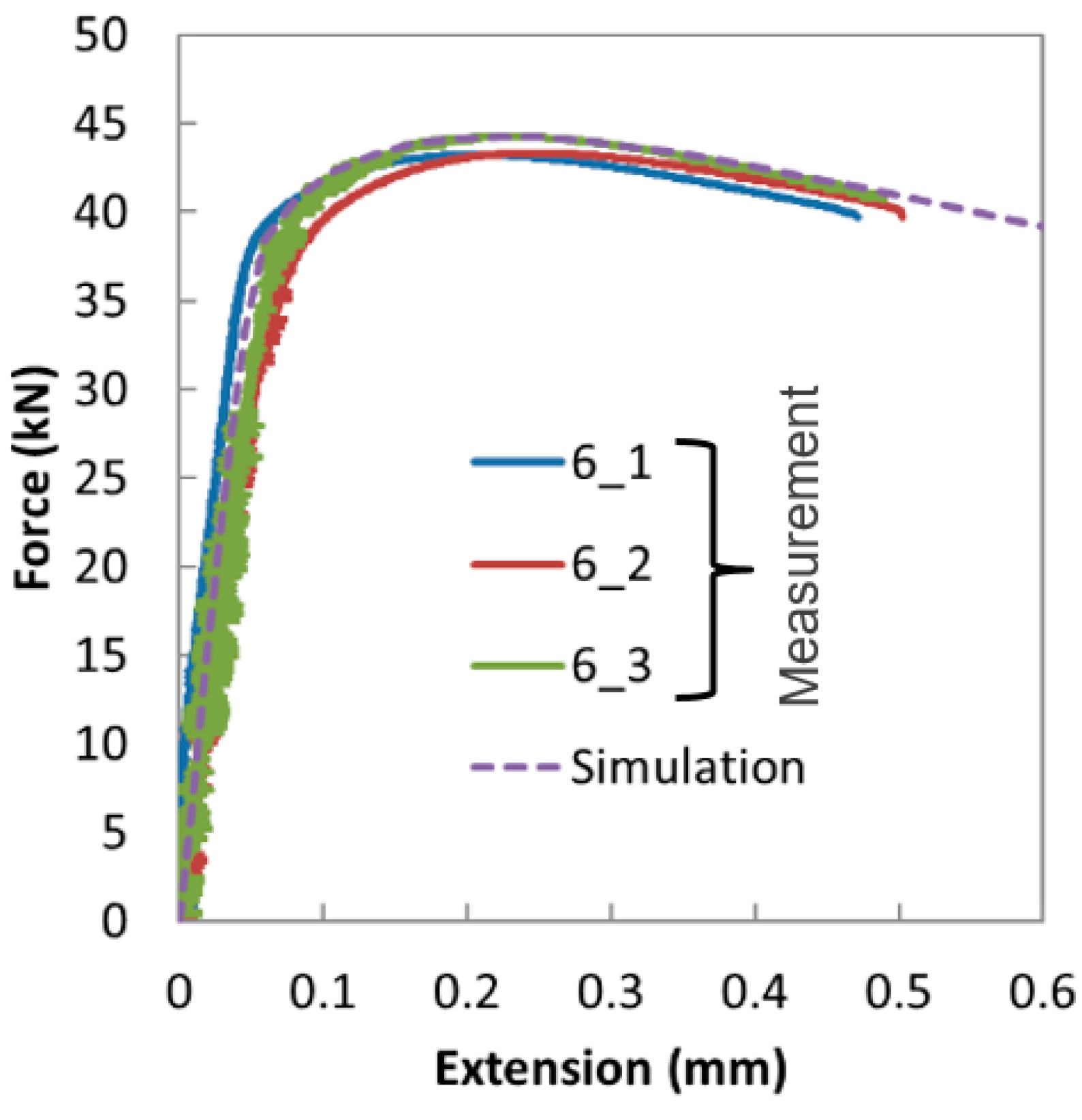
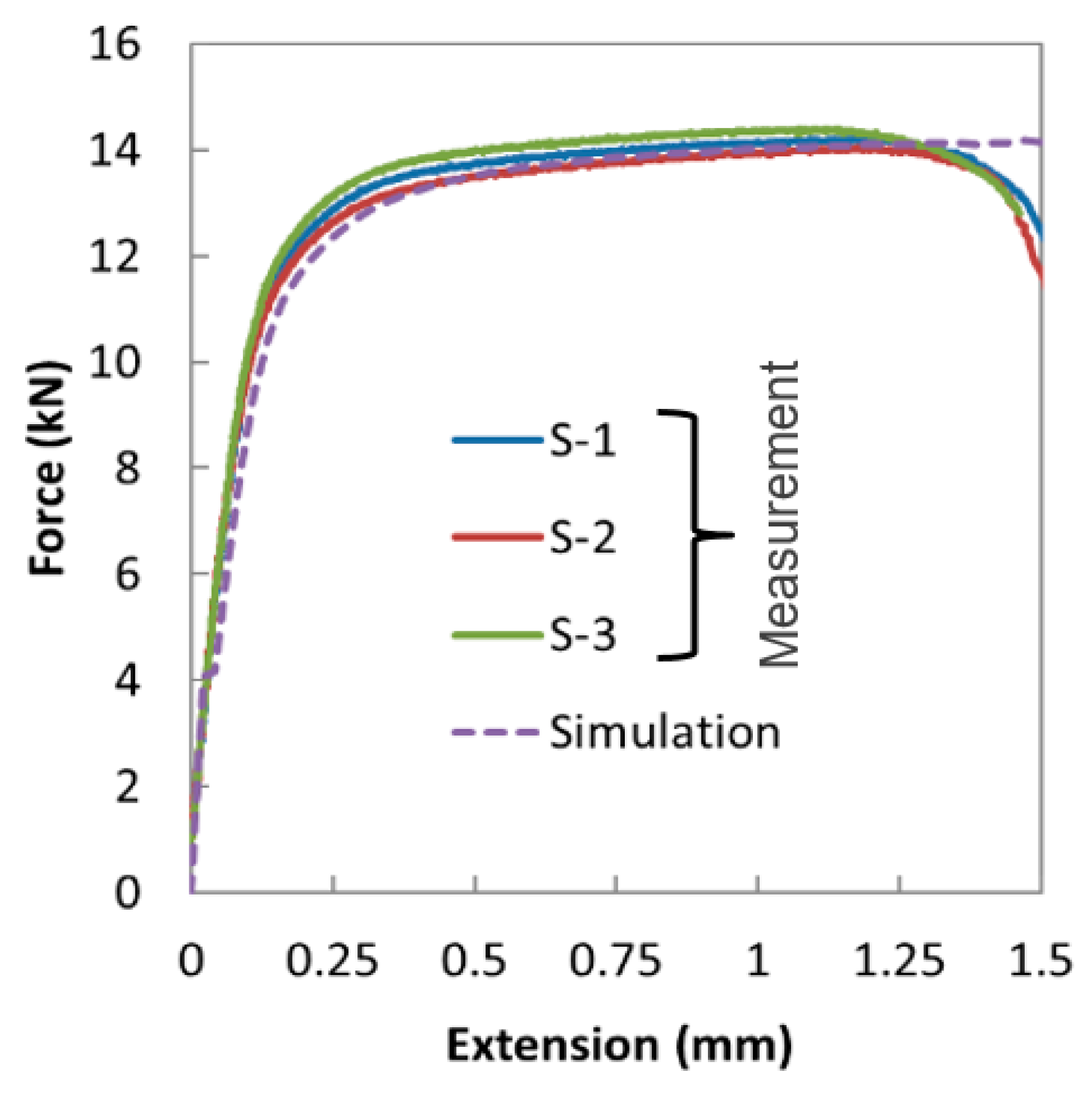
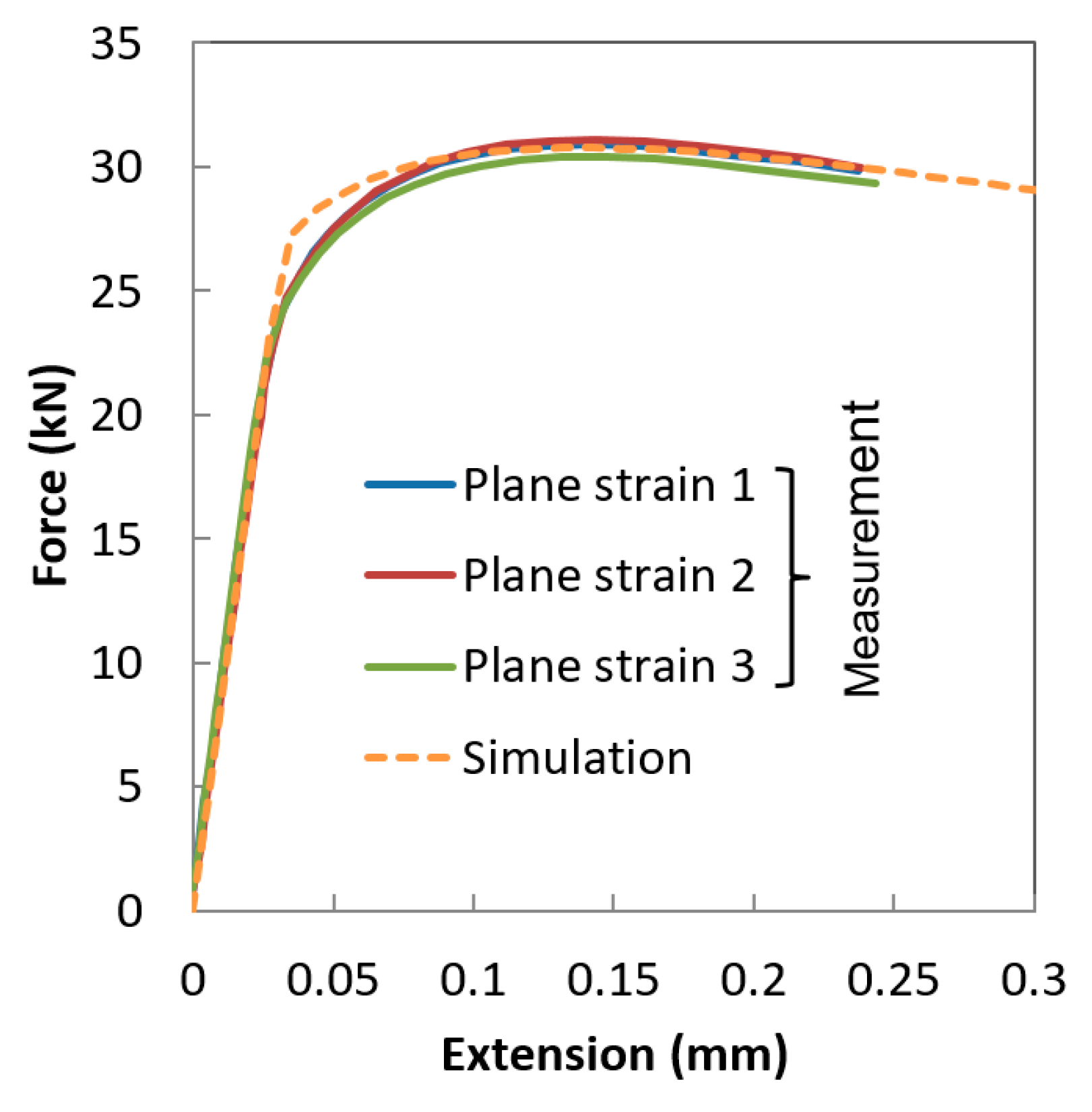
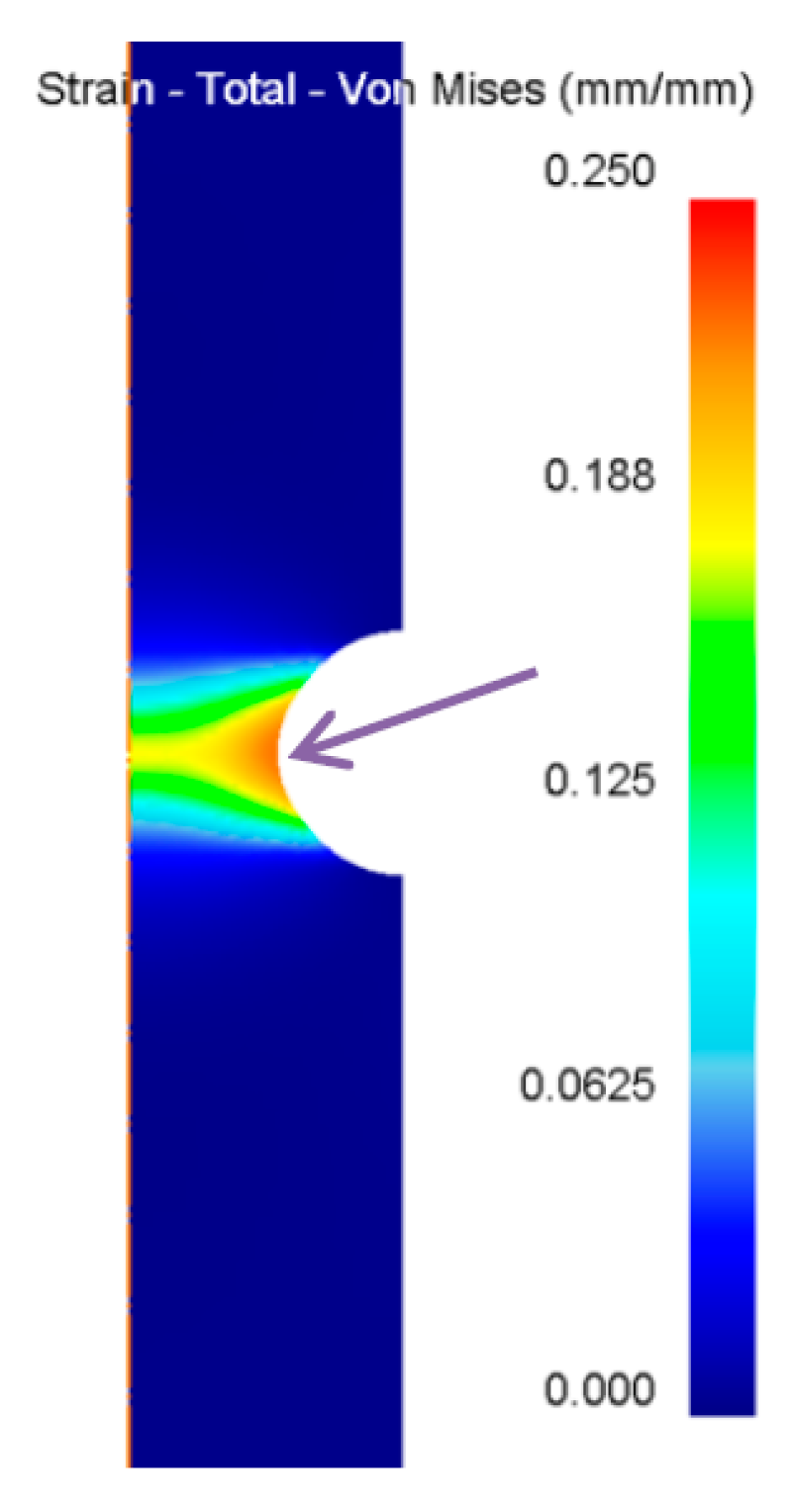
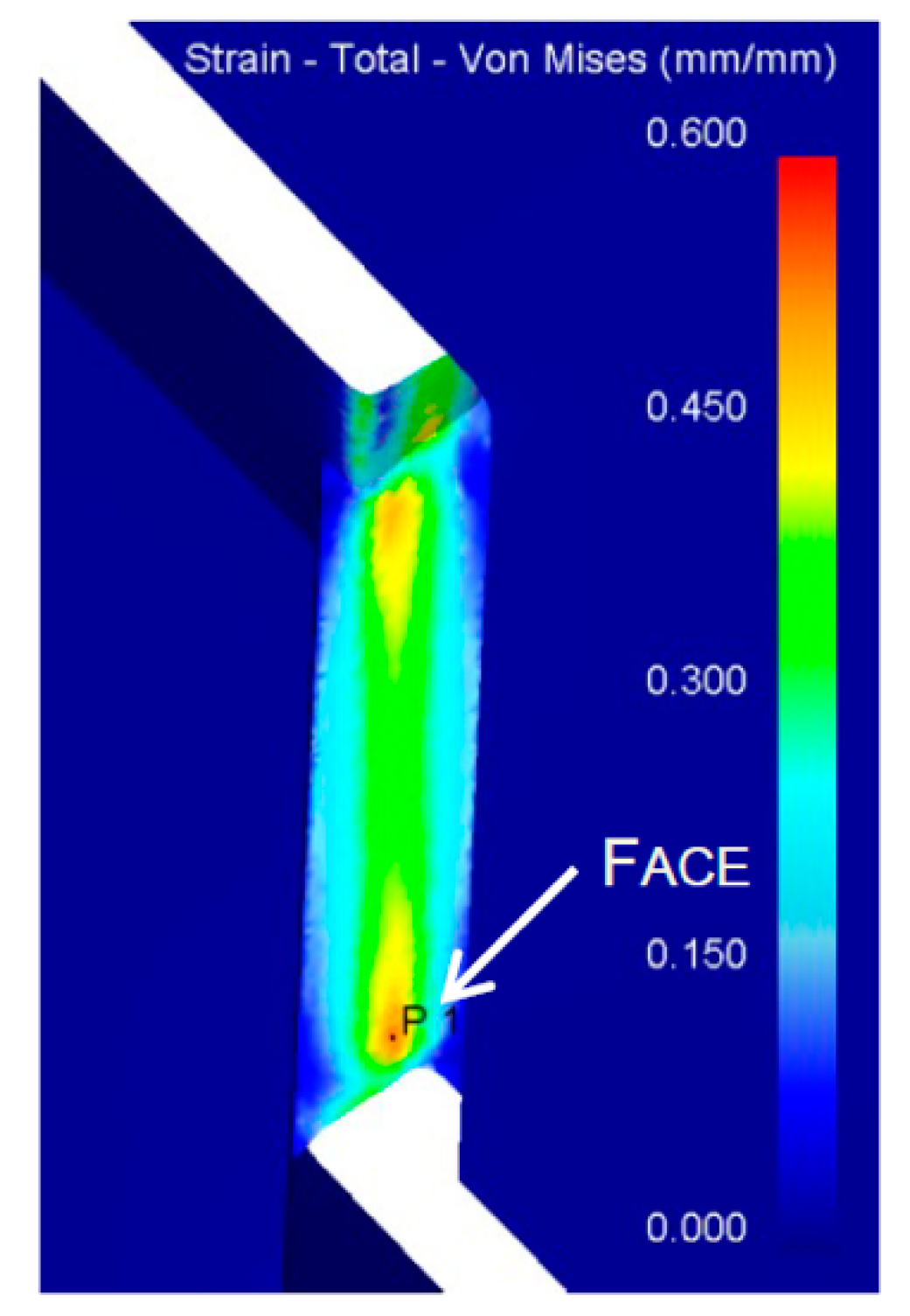
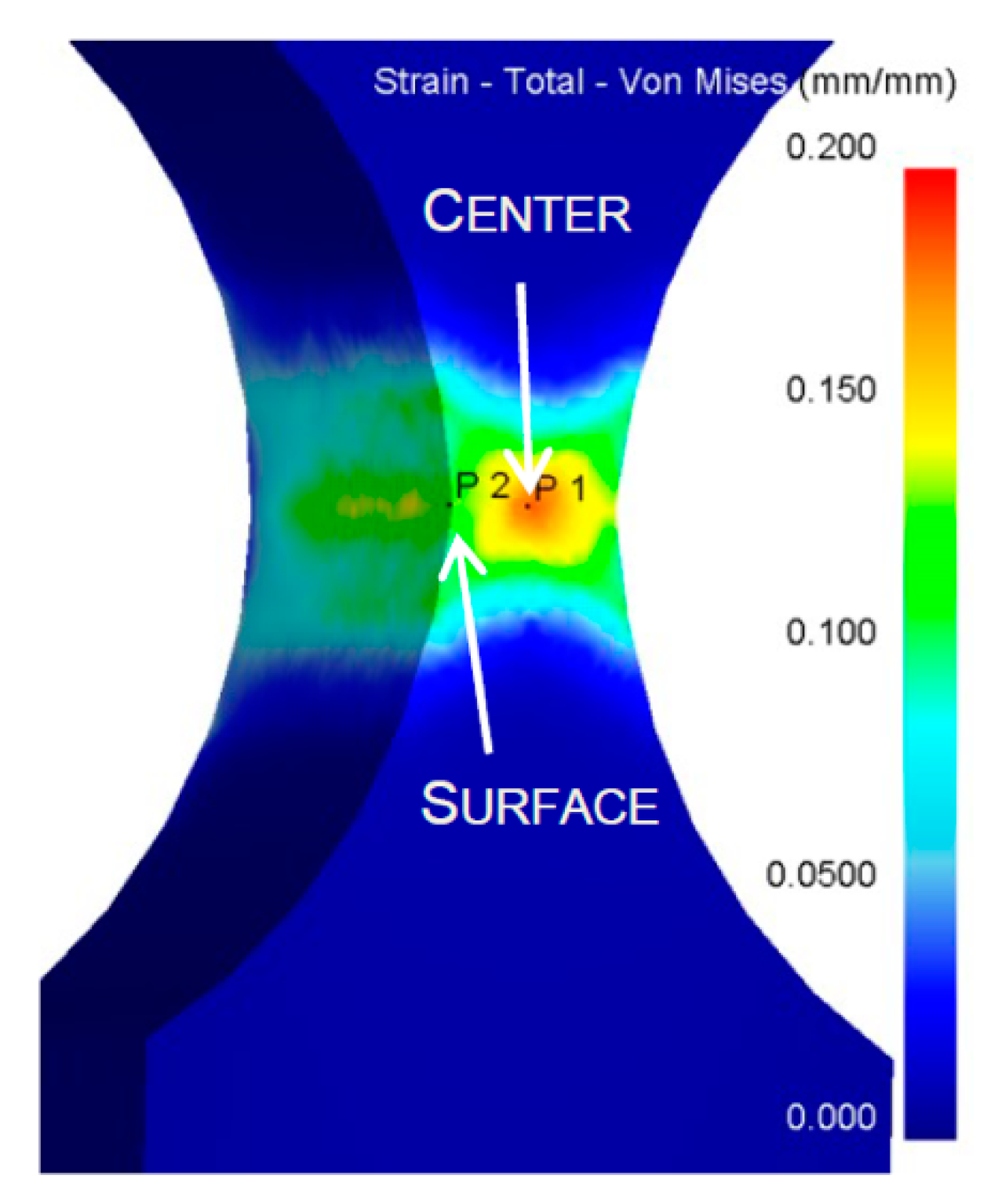
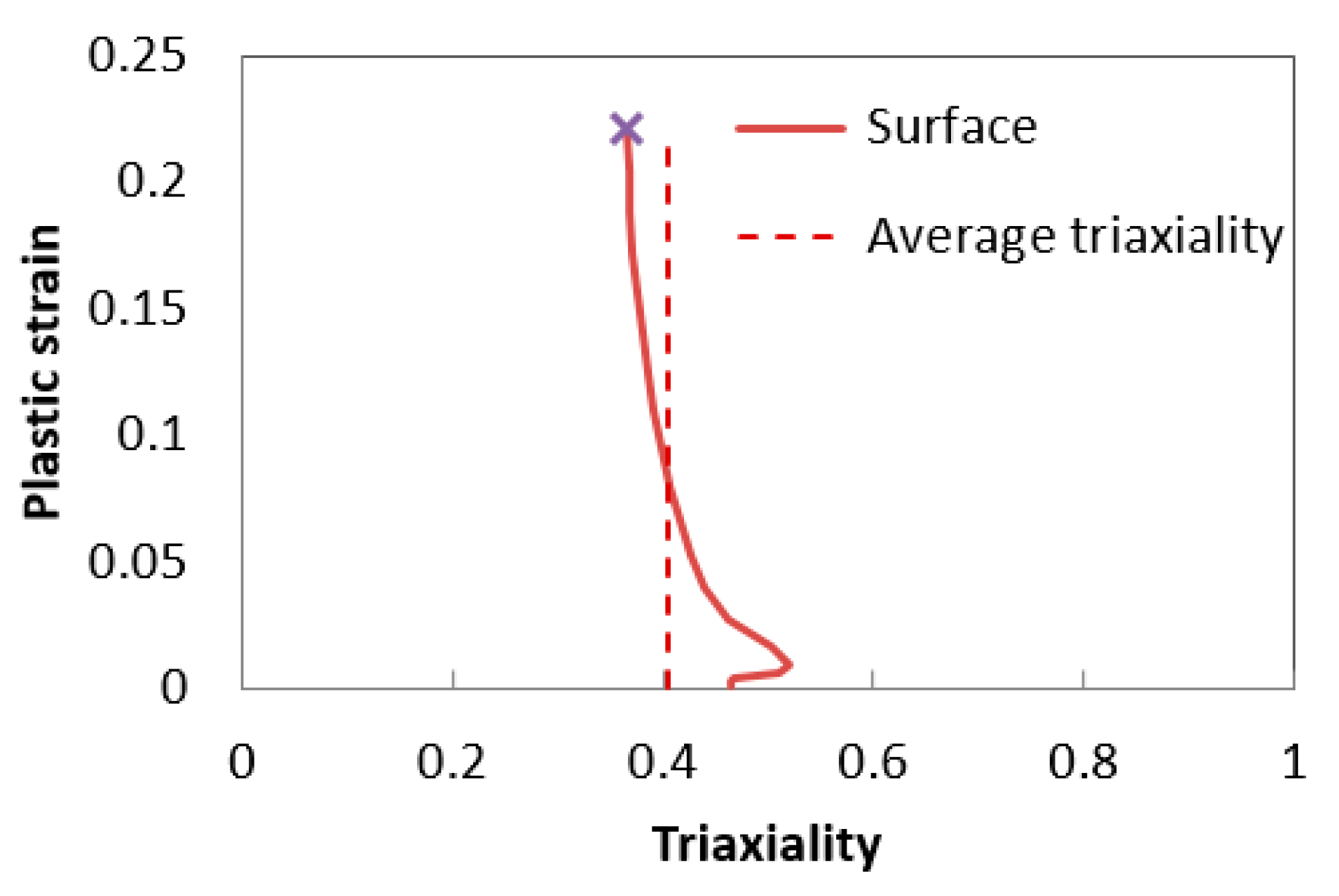
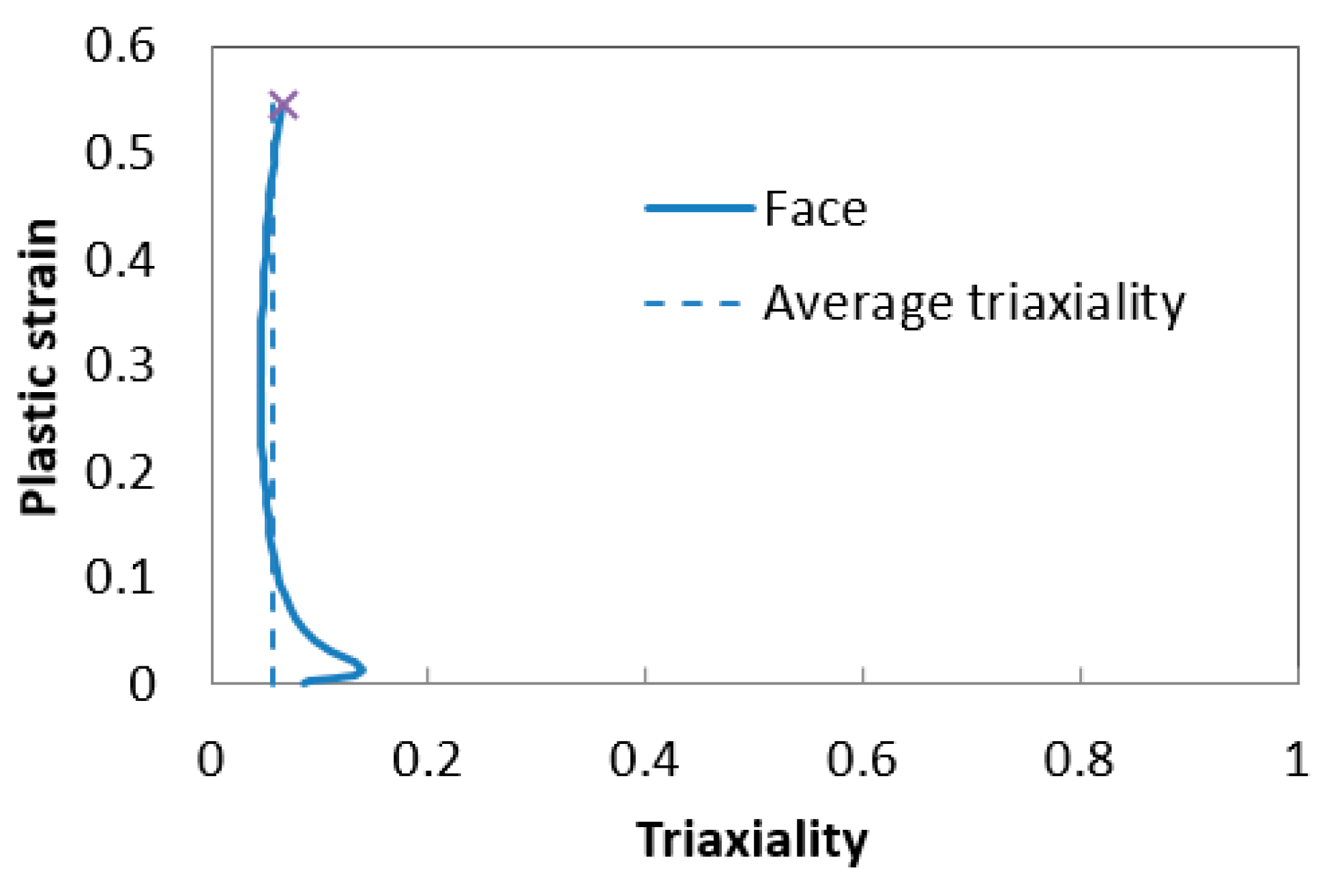
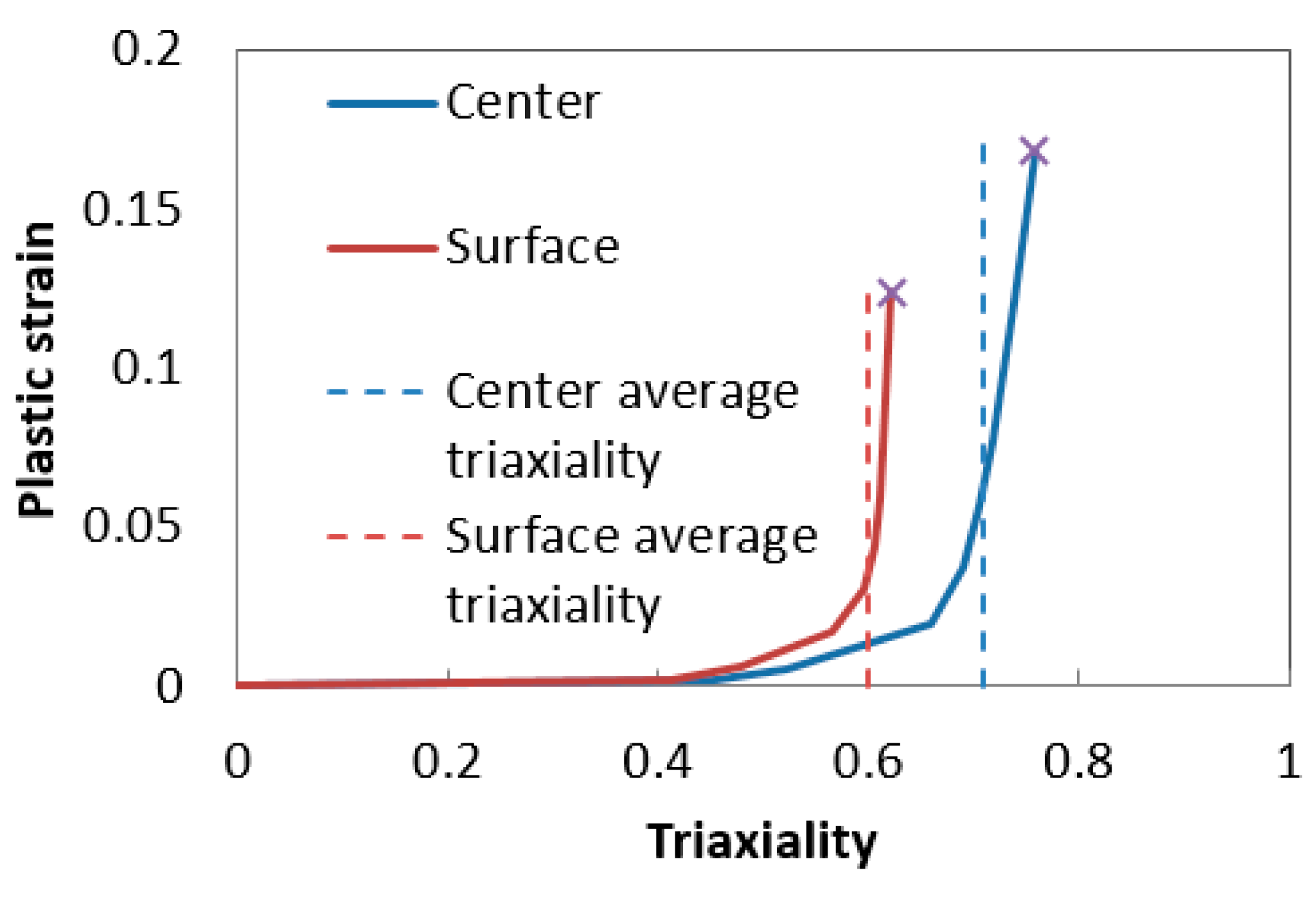
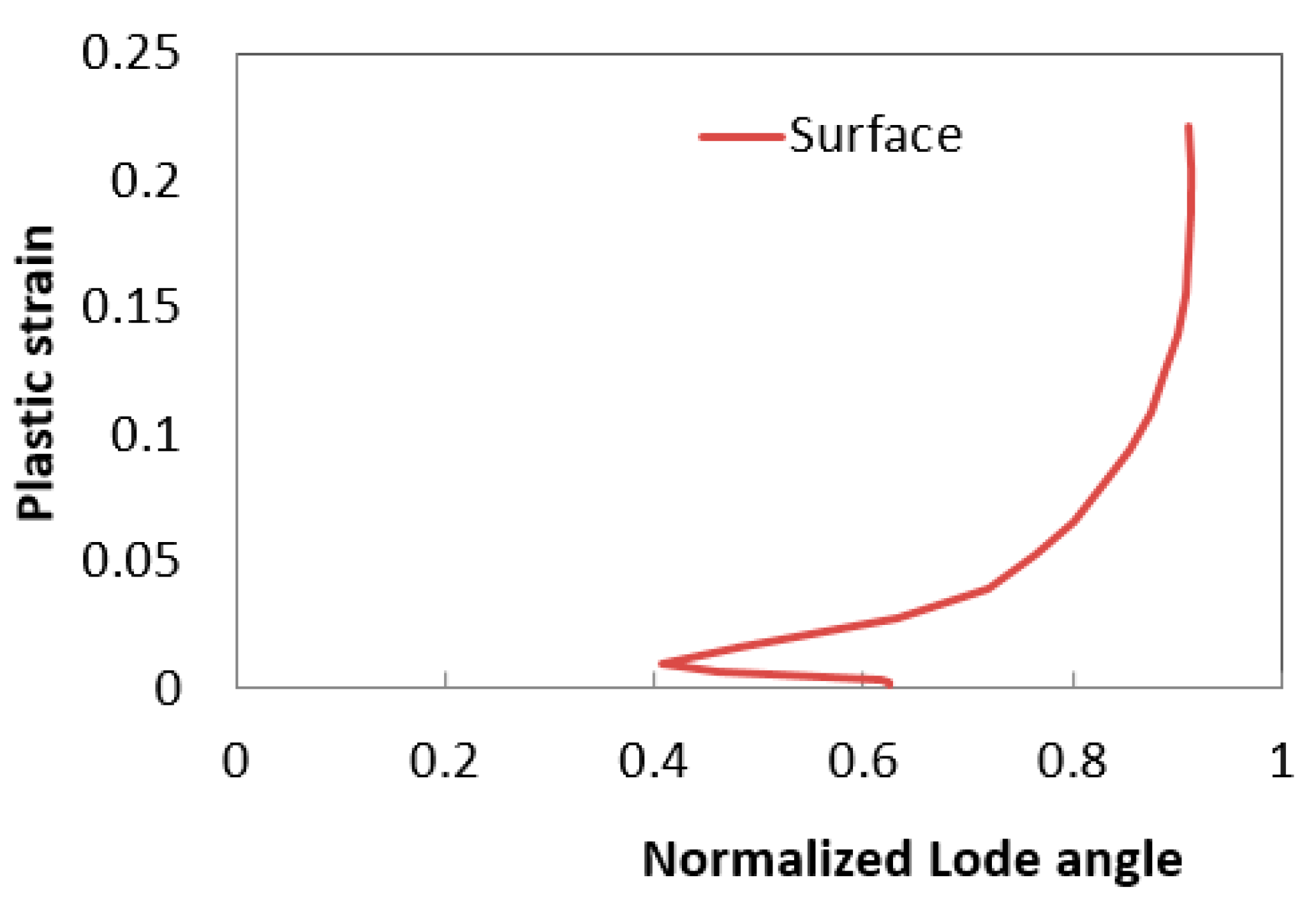
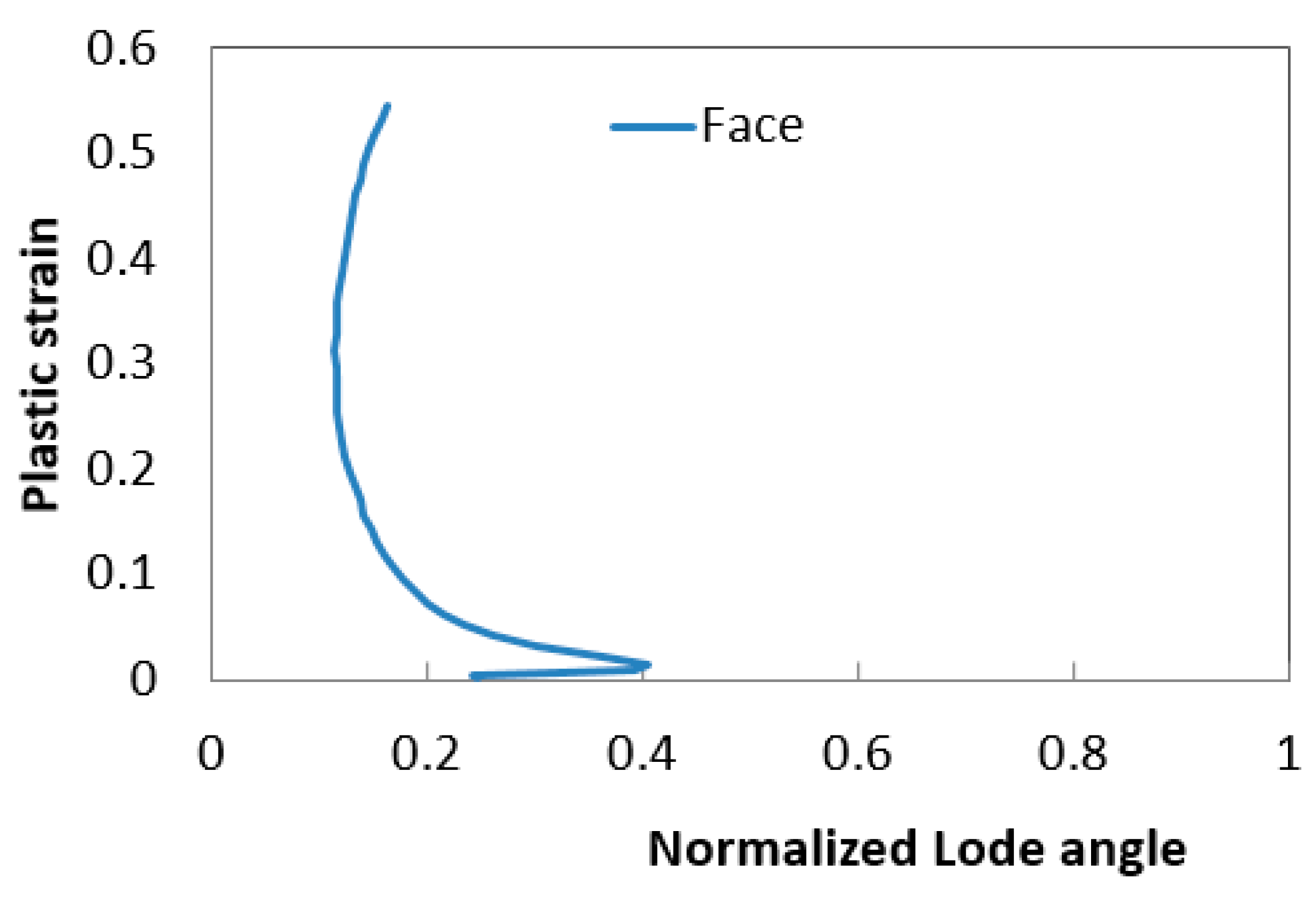
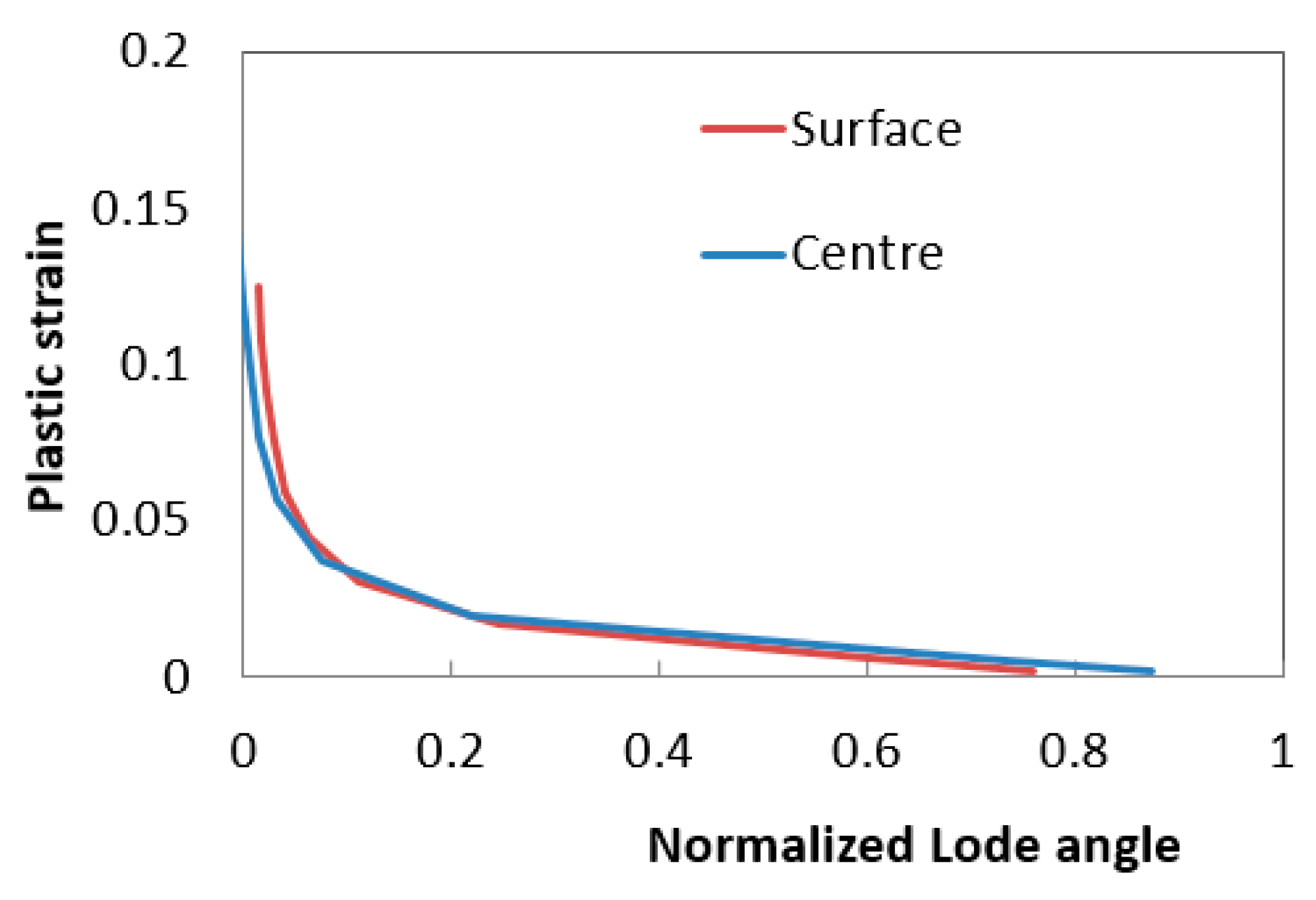
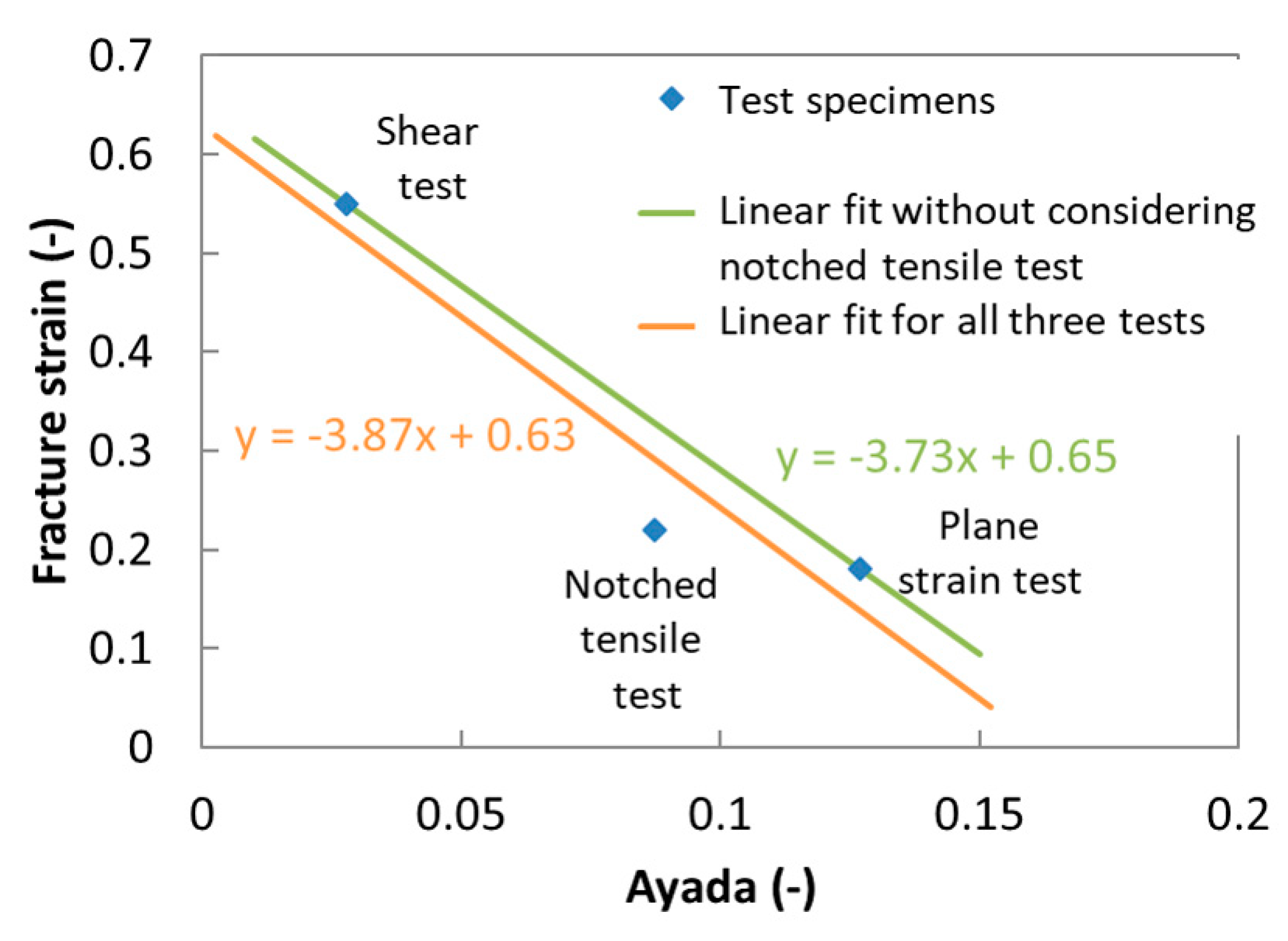
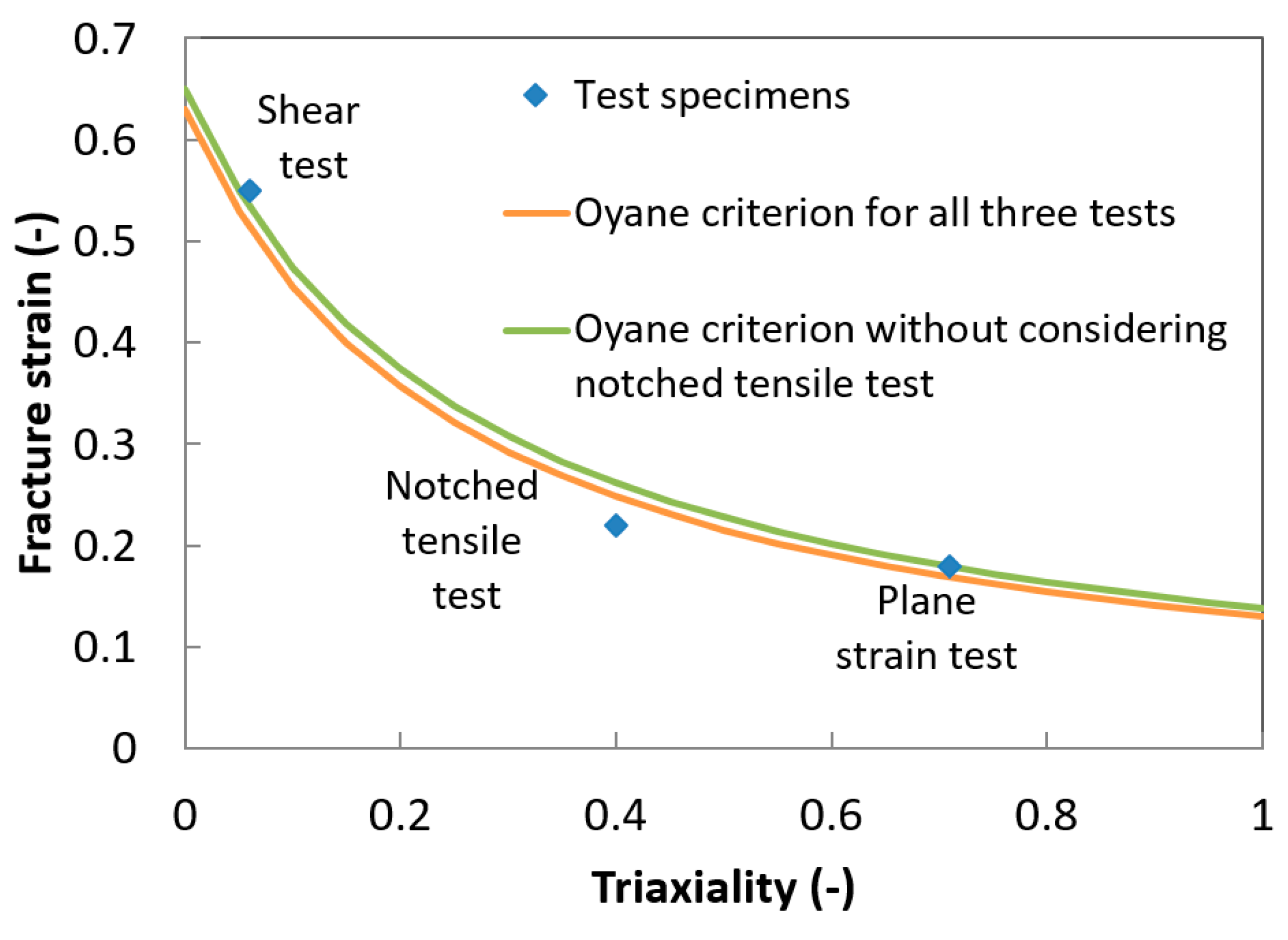

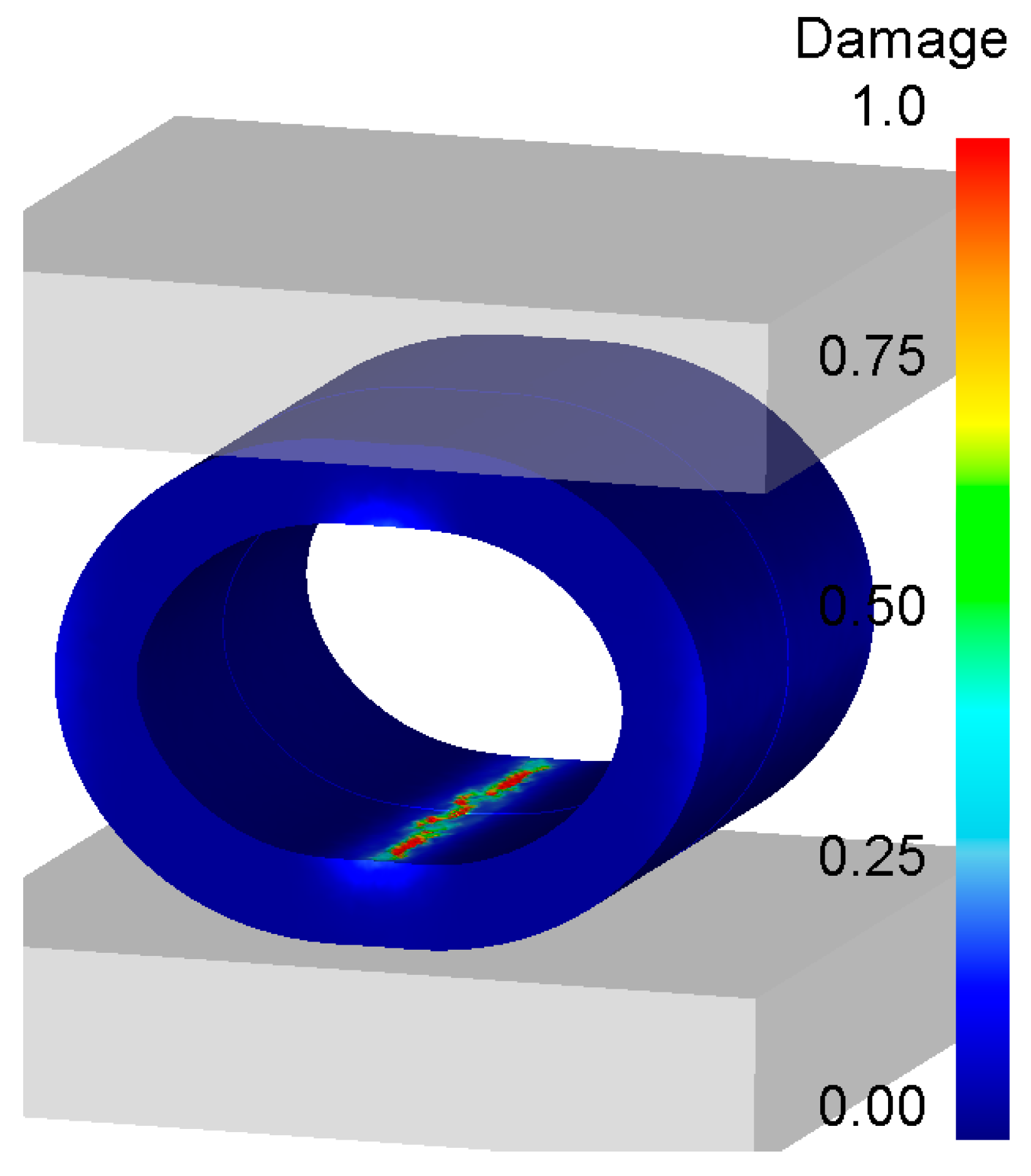
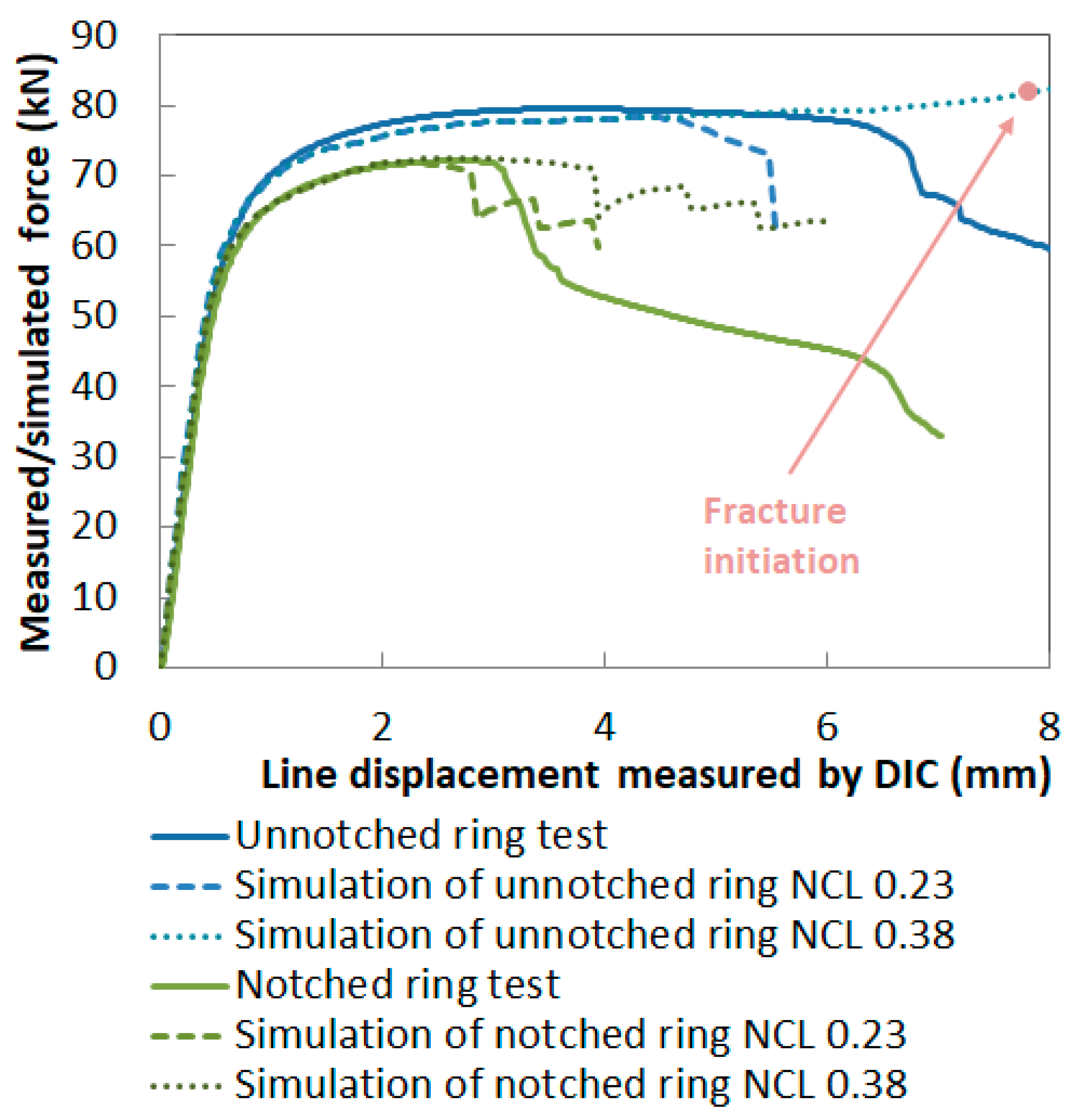
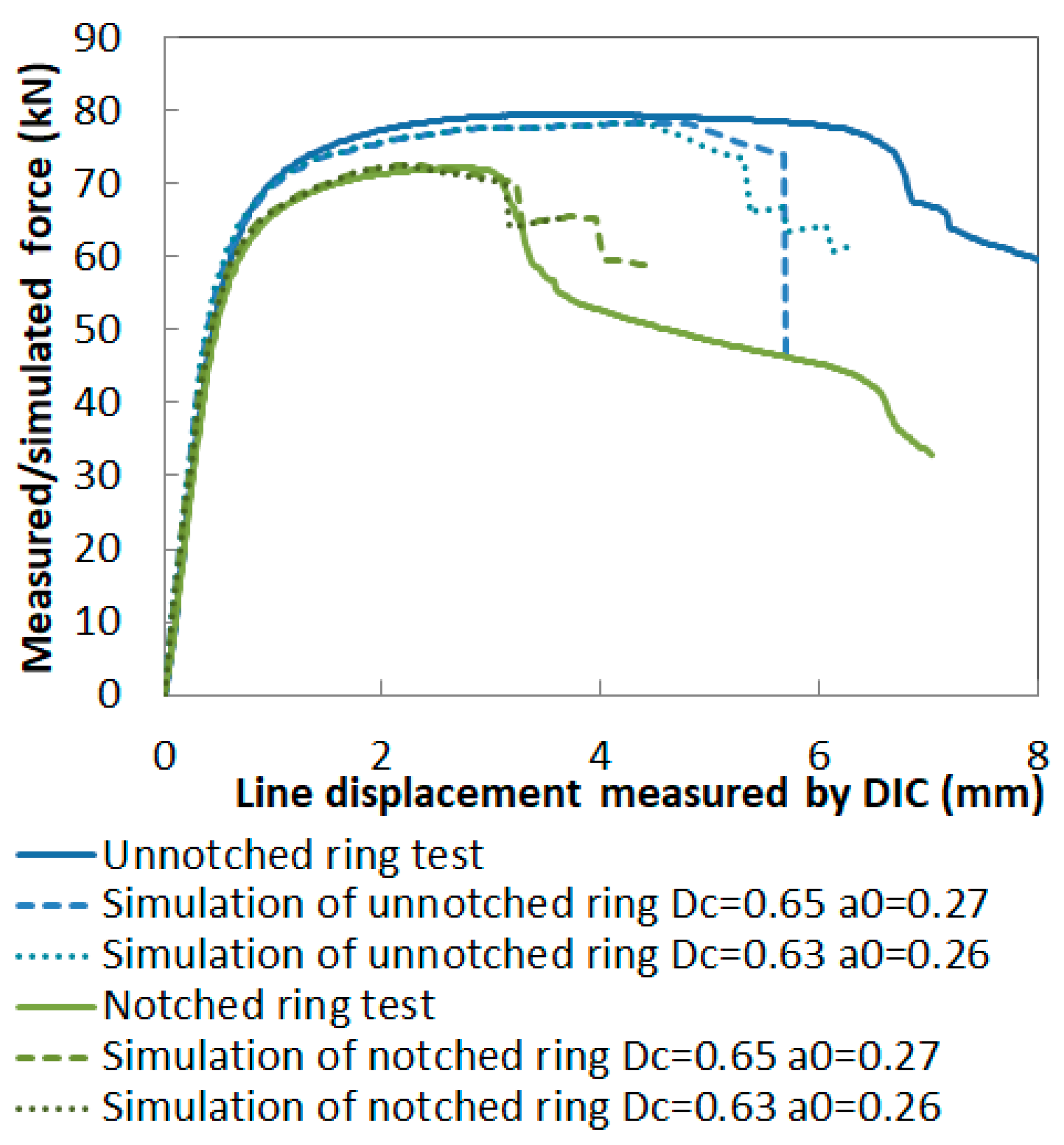
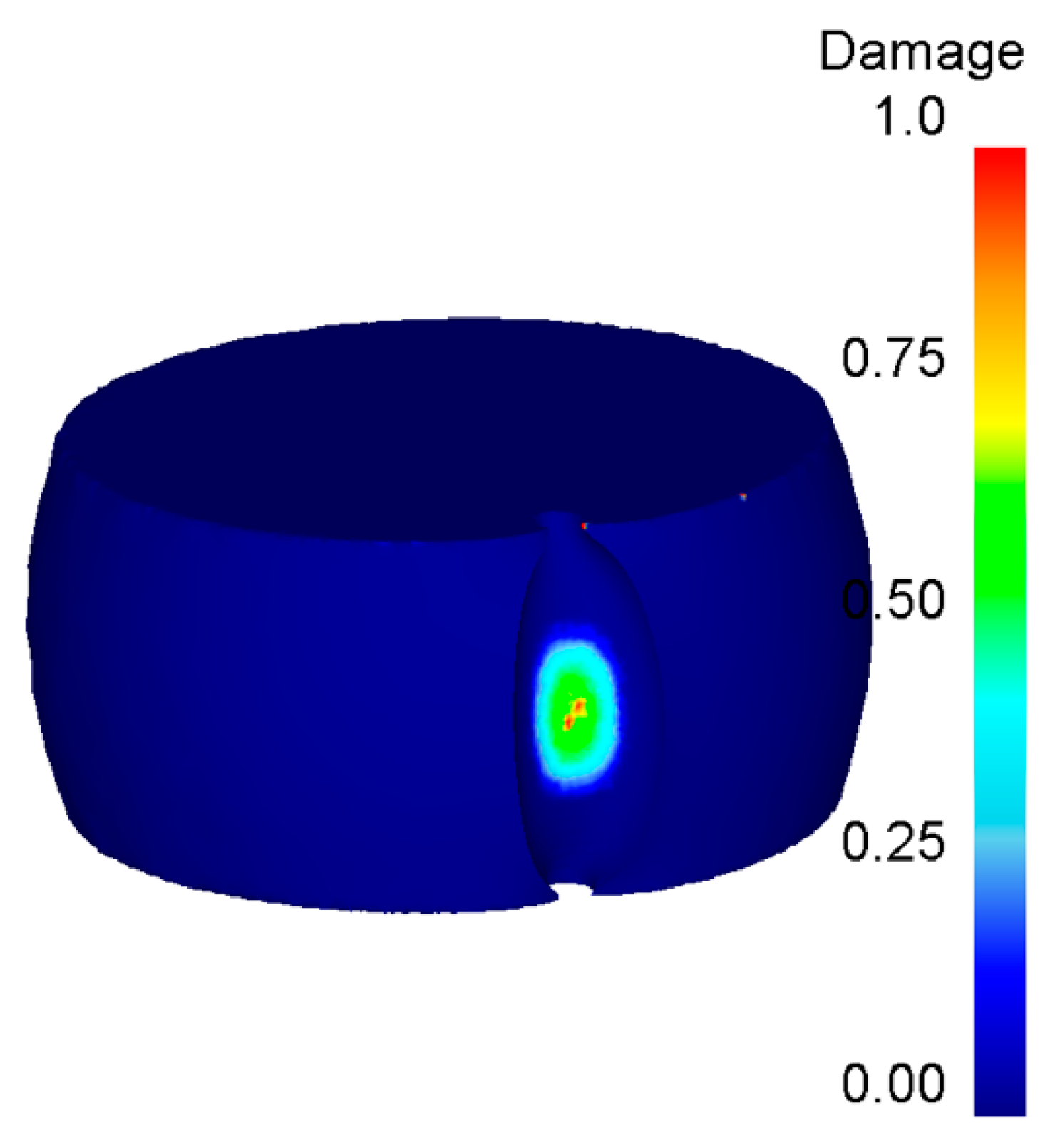
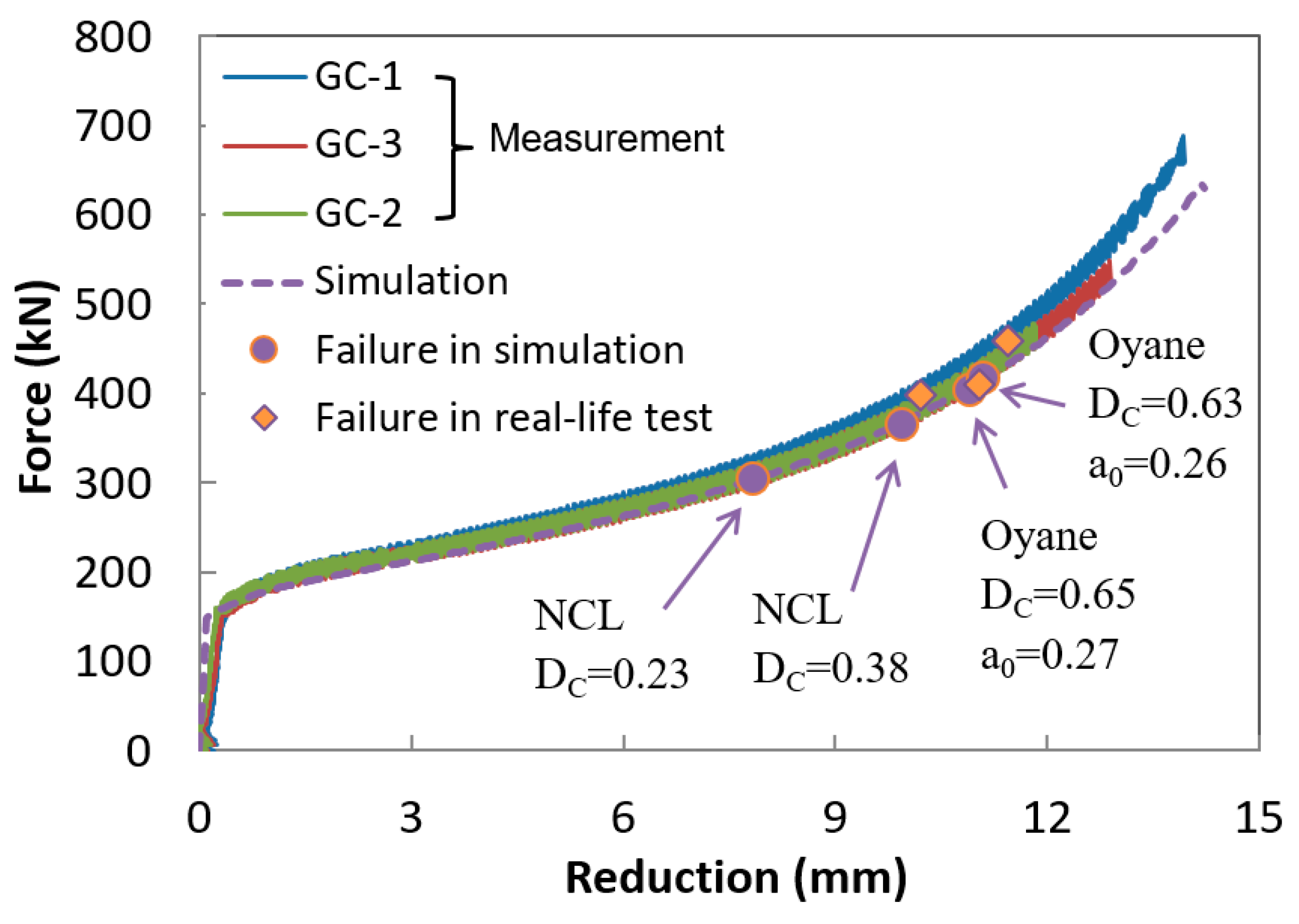
| Element | C | Si | Mn | Cr | Mo | Ni |
|---|---|---|---|---|---|---|
| Weight % | 0.34 | ≤0.40 | 0.65 | 1.50 | 0.22 | 1.50 |
| Yield Strength (MPa) | Tensile Strength (MPa) | Elongation (%) |
|---|---|---|
| 877 | 990 | 6.6 |
| Strain (-) | Flow Stress (MPa) | Strain (-) | Flow Stress (MPa) |
|---|---|---|---|
| 0 | 978 | 0.2 | 1210 |
| 0.005 | 1004 | 0.3 | 1230 |
| 0.01 | 1025 | 0.4 | 1242 |
| 0.015 | 1046 | 0.5 | 1255 |
| 0.02 | 1068 | 0.6 | 1268 |
| 0.03 | 1100 | 0.7 | 1282 |
| 0.04 | 1122 | 0.8 | 1295 |
| 0.05 | 1135 | 1 | 1325 |
| 0.06 | 1150 | 1.15 | 1348 |
| 0.1 | 1180 | 1.2 | 1356 |
| Specimen Type | Fracture Strain (-) | NCL Critical Damage (-) | Average Triaxiality (-) | Normalized Lode Angle (-) |
|---|---|---|---|---|
| Notched tensile specimen | 0.22 | 0.23 | 0.40 | 0.91 |
| Shear test specimen | 0.55 | 0.38 | 0.06 | 0.16 |
| Plane strain specimen | 0.18 | 0.23 | 0.71 | 0.00 |
| Specimen Type | Critical Damage DC (-) | Material Coefficient a0 (-) |
|---|---|---|
| All specimens | 0.63 | 0.26 |
| Shear and plane strain only | 0.65 | 0.27 |
© 2020 by the authors. Licensee MDPI, Basel, Switzerland. This article is an open access article distributed under the terms and conditions of the Creative Commons Attribution (CC BY) license (http://creativecommons.org/licenses/by/4.0/).
Share and Cite
Poláková, I.; Zemko, M.; Rund, M.; Džugan, J. Using DEFORM Software for Determination of Parameters for Two Fracture Criteria on DIN 34CrNiMo6. Metals 2020, 10, 445. https://doi.org/10.3390/met10040445
Poláková I, Zemko M, Rund M, Džugan J. Using DEFORM Software for Determination of Parameters for Two Fracture Criteria on DIN 34CrNiMo6. Metals. 2020; 10(4):445. https://doi.org/10.3390/met10040445
Chicago/Turabian StylePoláková, Ivana, Michal Zemko, Martin Rund, and Ján Džugan. 2020. "Using DEFORM Software for Determination of Parameters for Two Fracture Criteria on DIN 34CrNiMo6" Metals 10, no. 4: 445. https://doi.org/10.3390/met10040445
APA StylePoláková, I., Zemko, M., Rund, M., & Džugan, J. (2020). Using DEFORM Software for Determination of Parameters for Two Fracture Criteria on DIN 34CrNiMo6. Metals, 10(4), 445. https://doi.org/10.3390/met10040445






